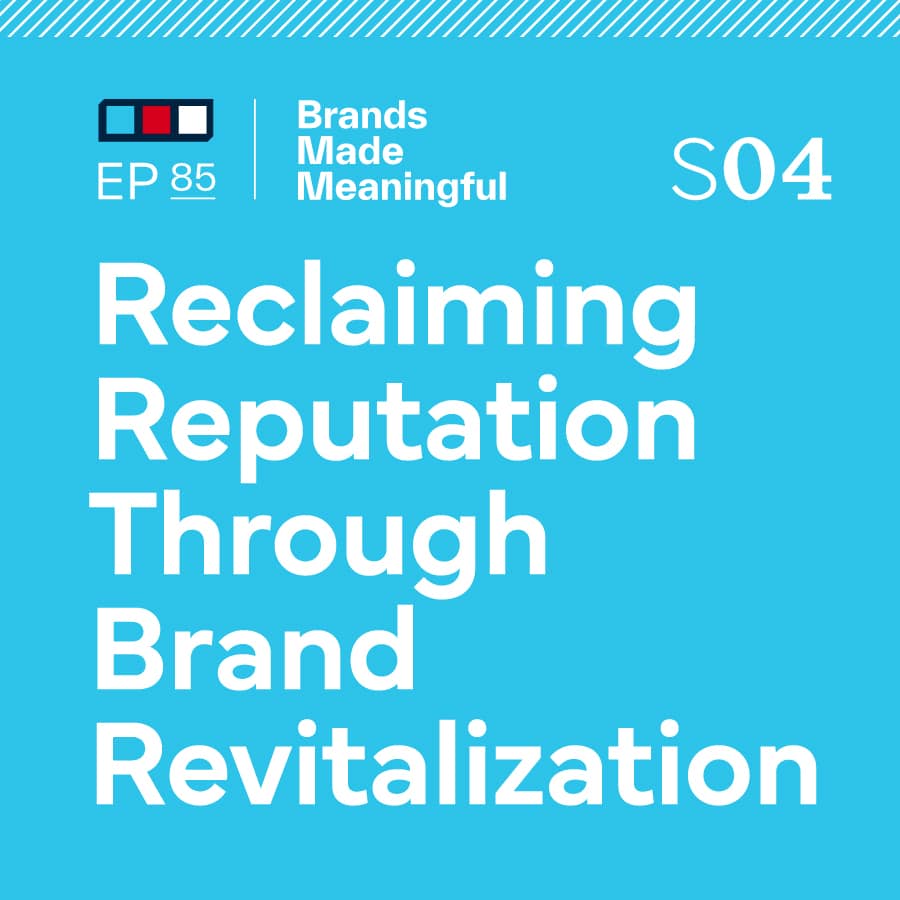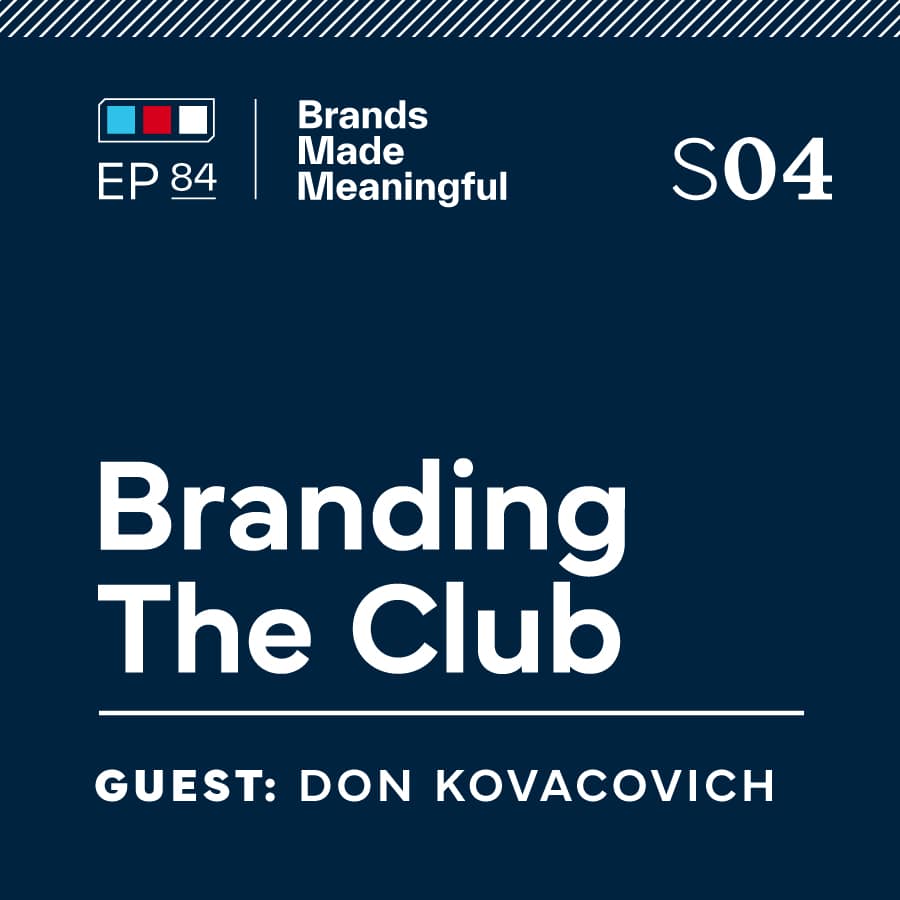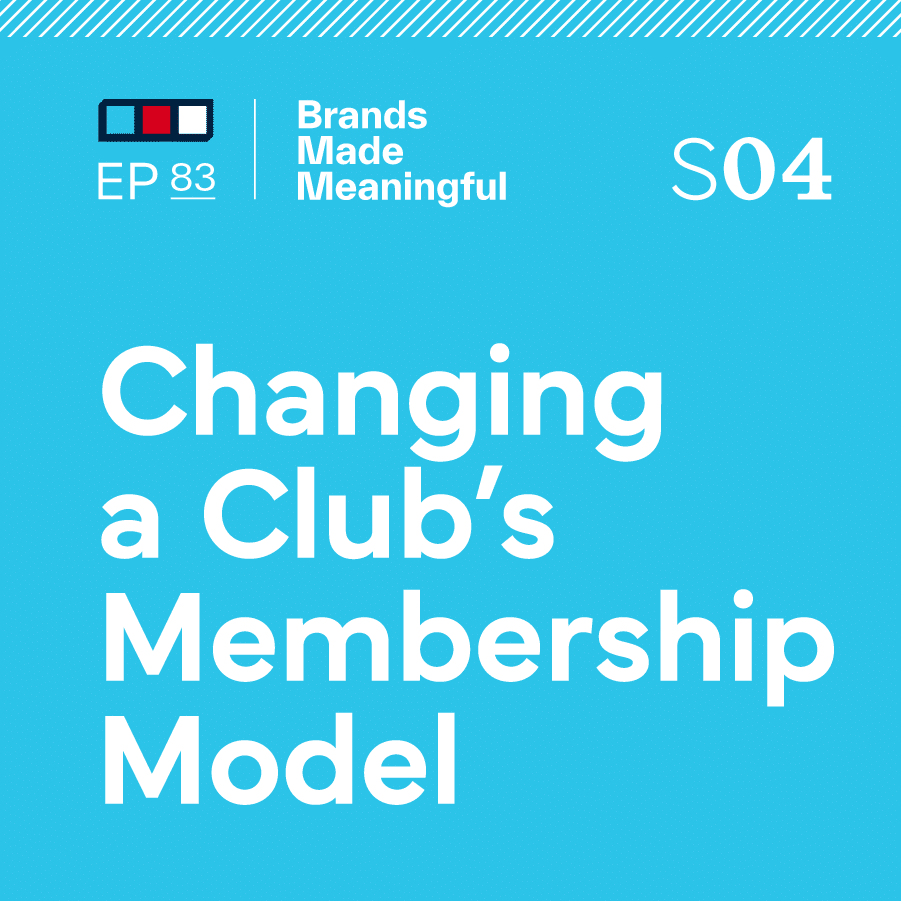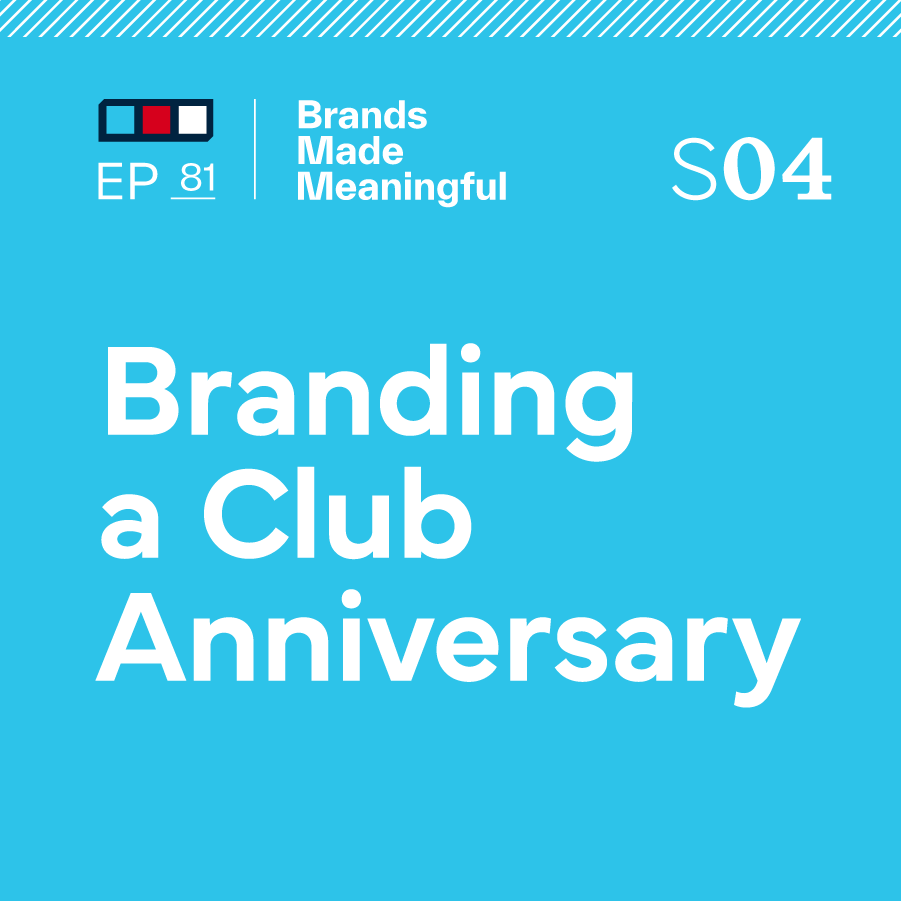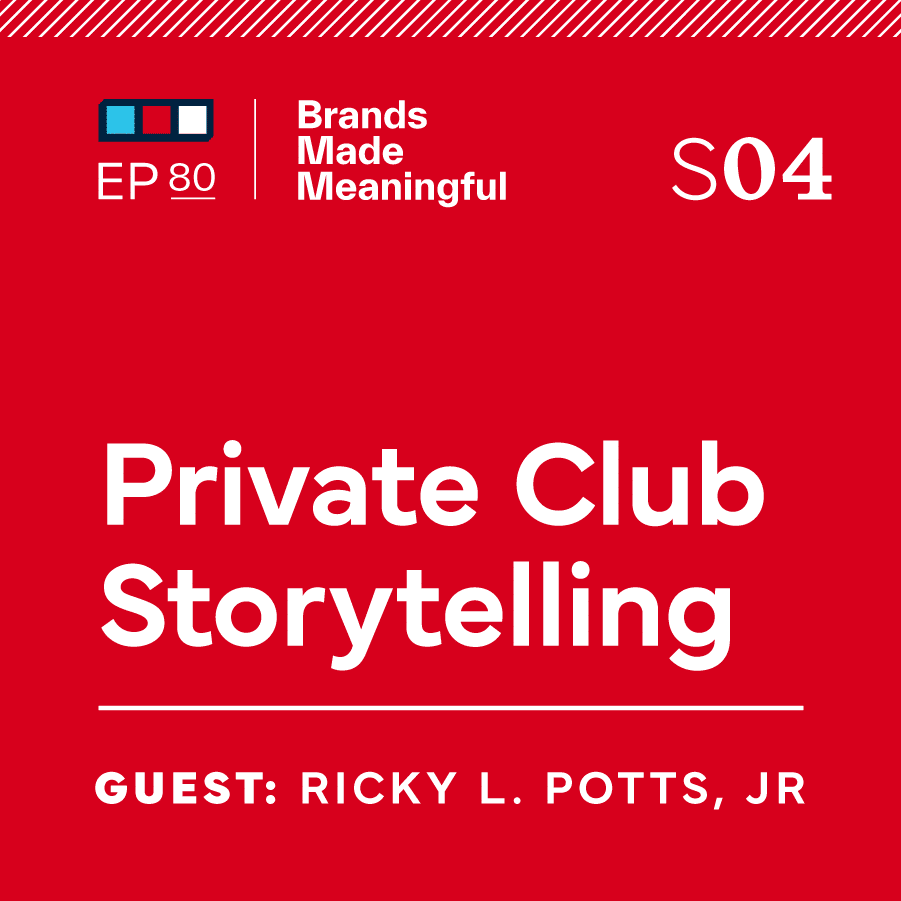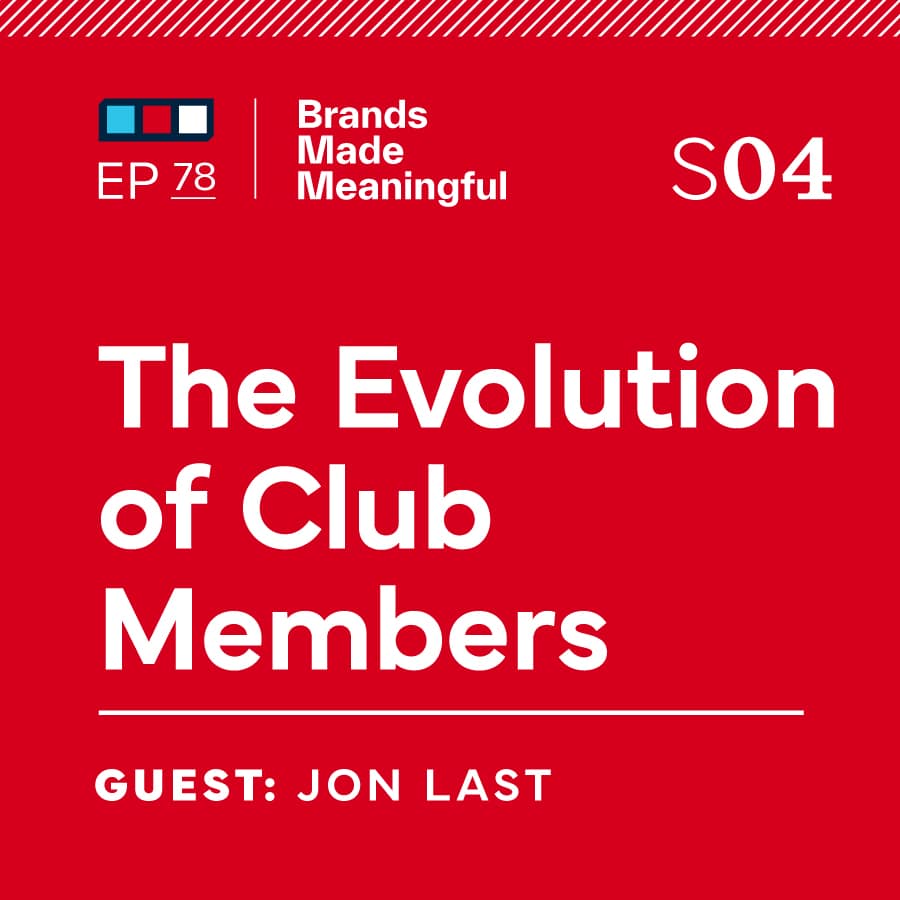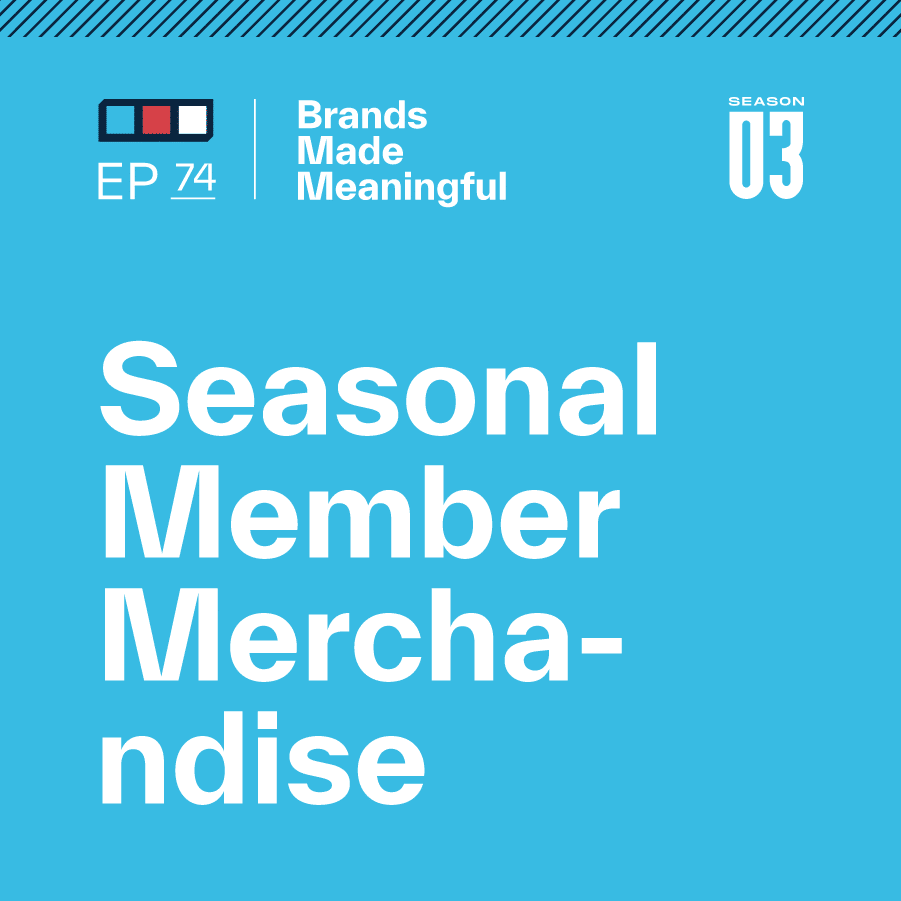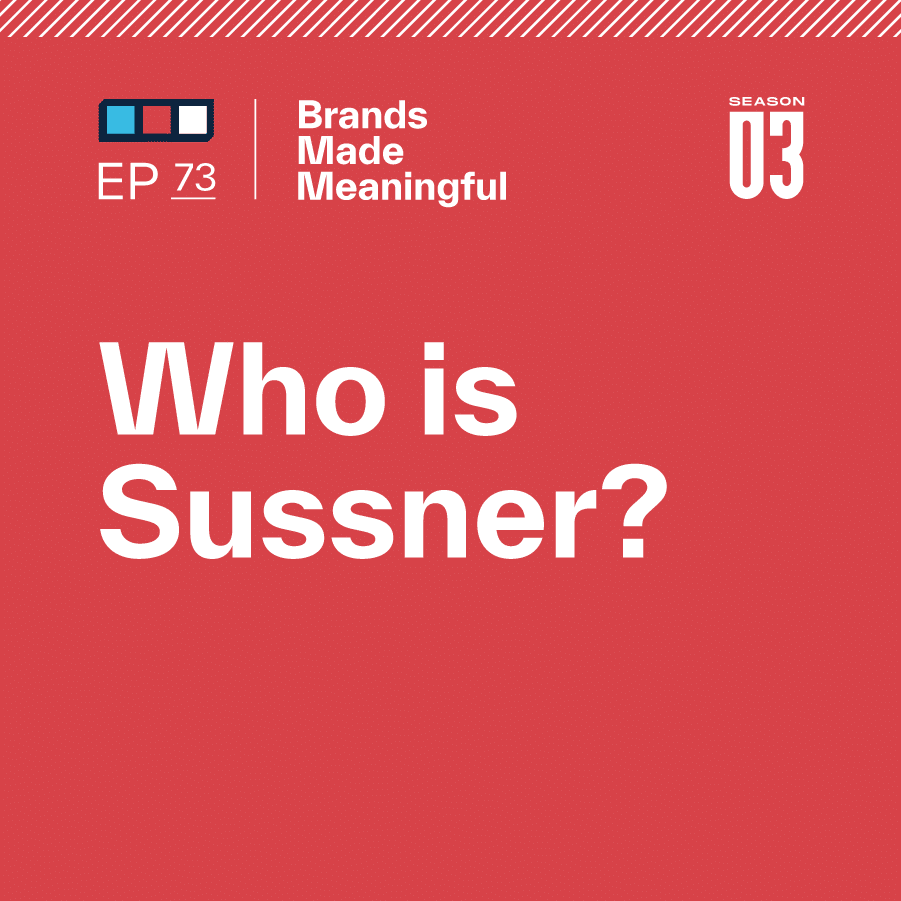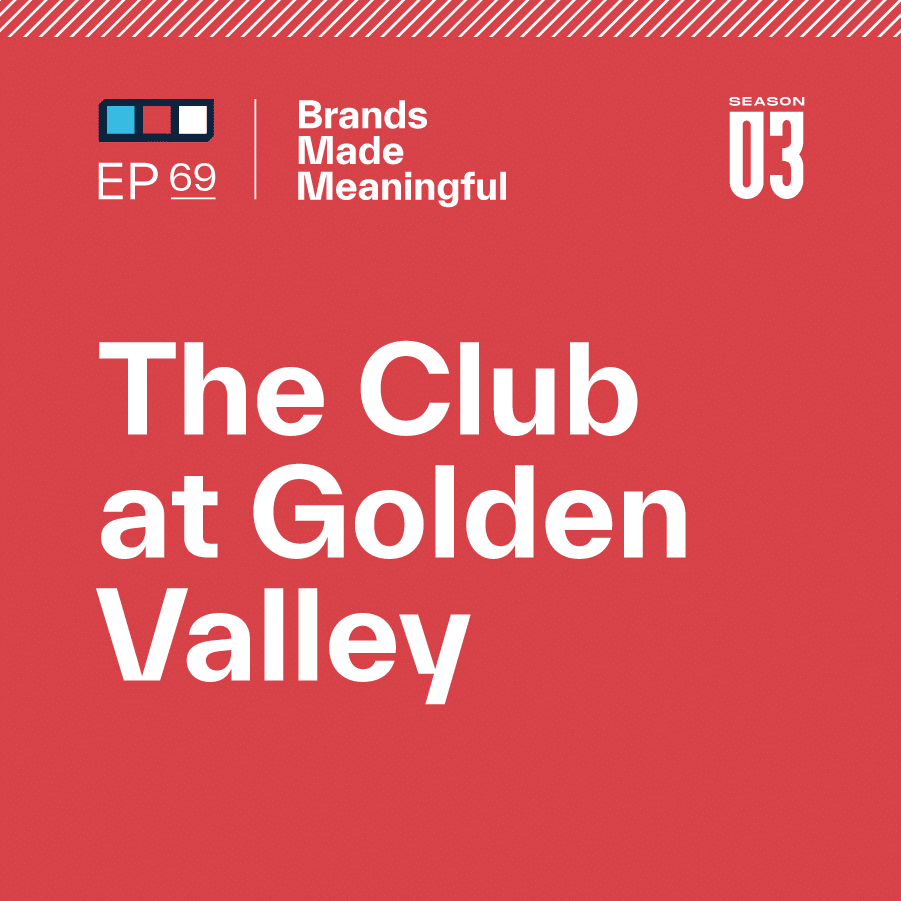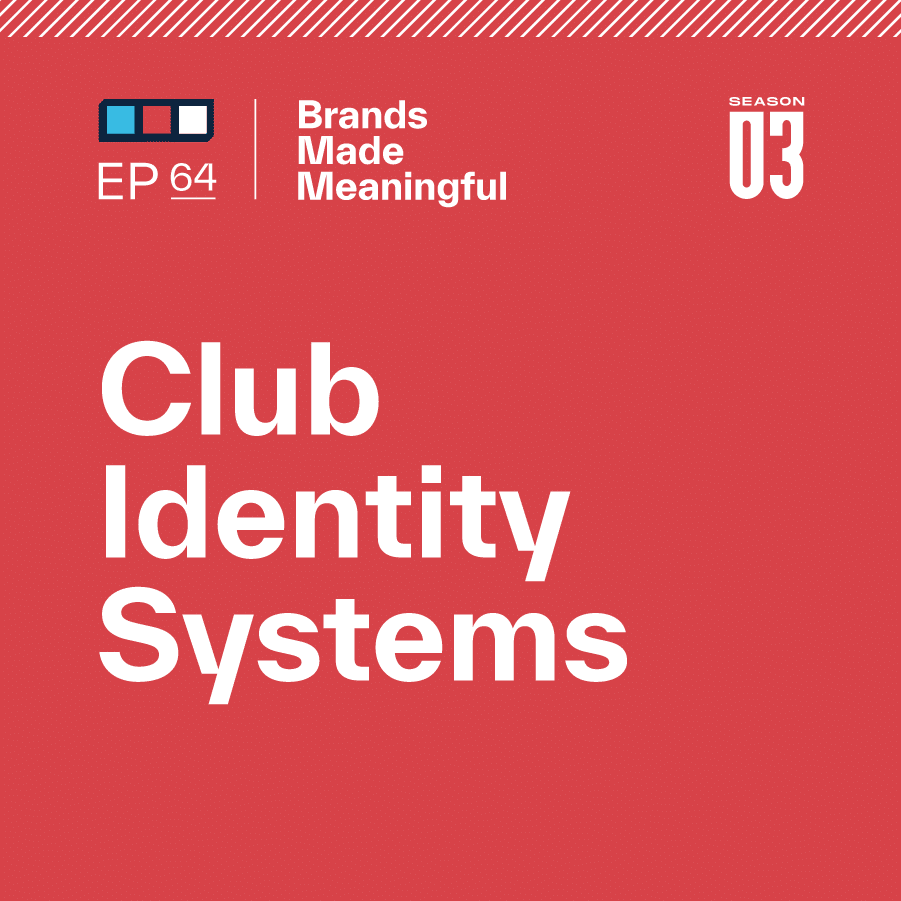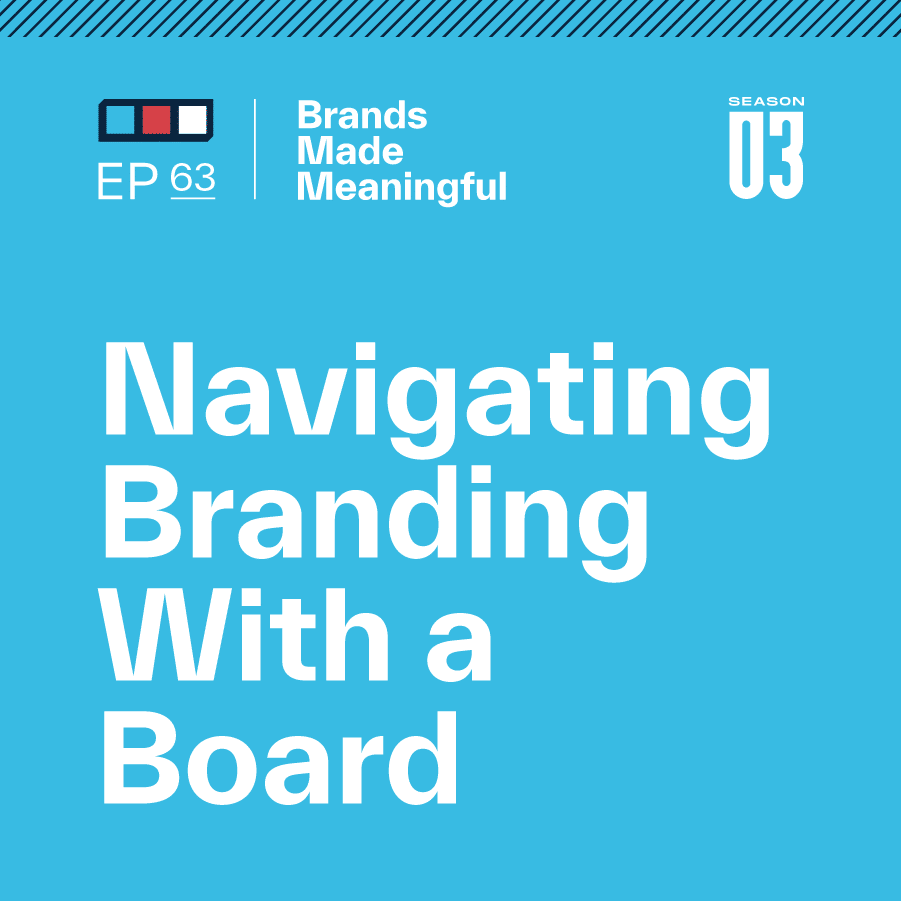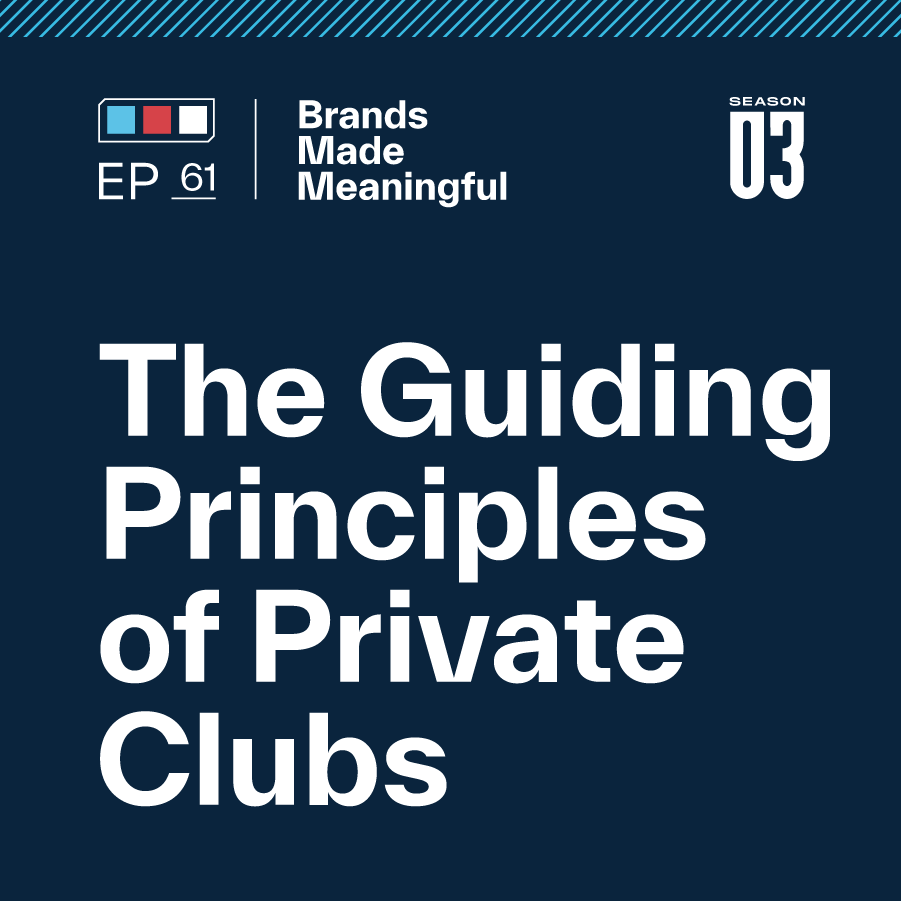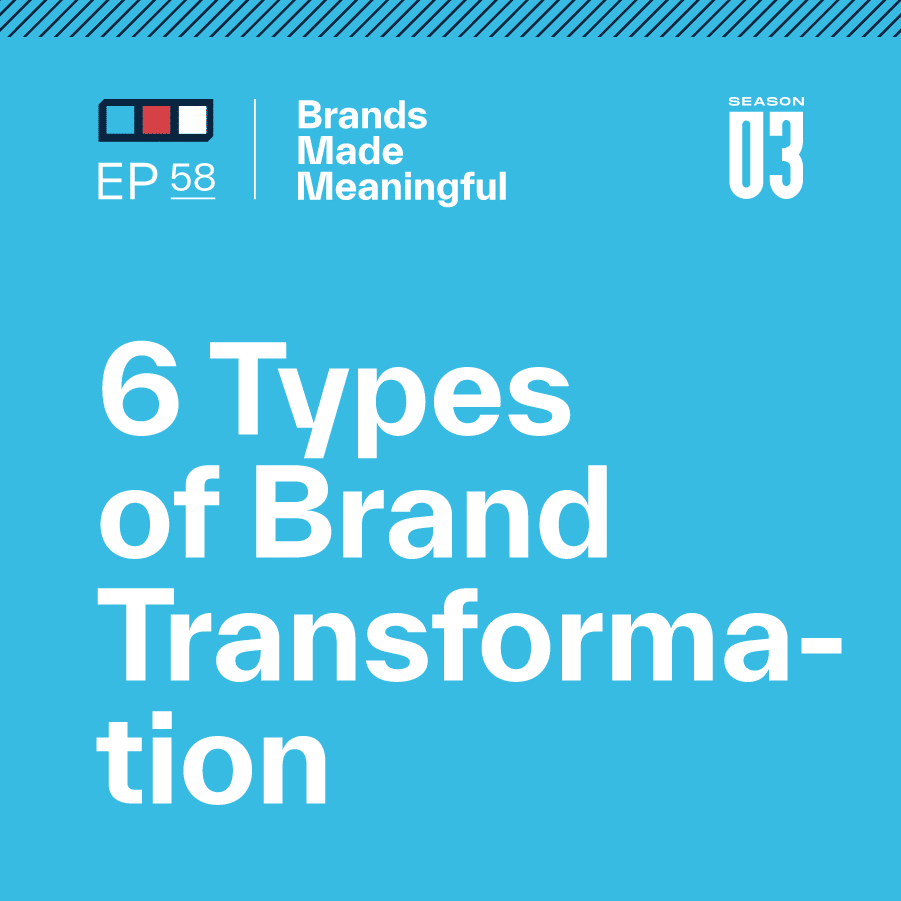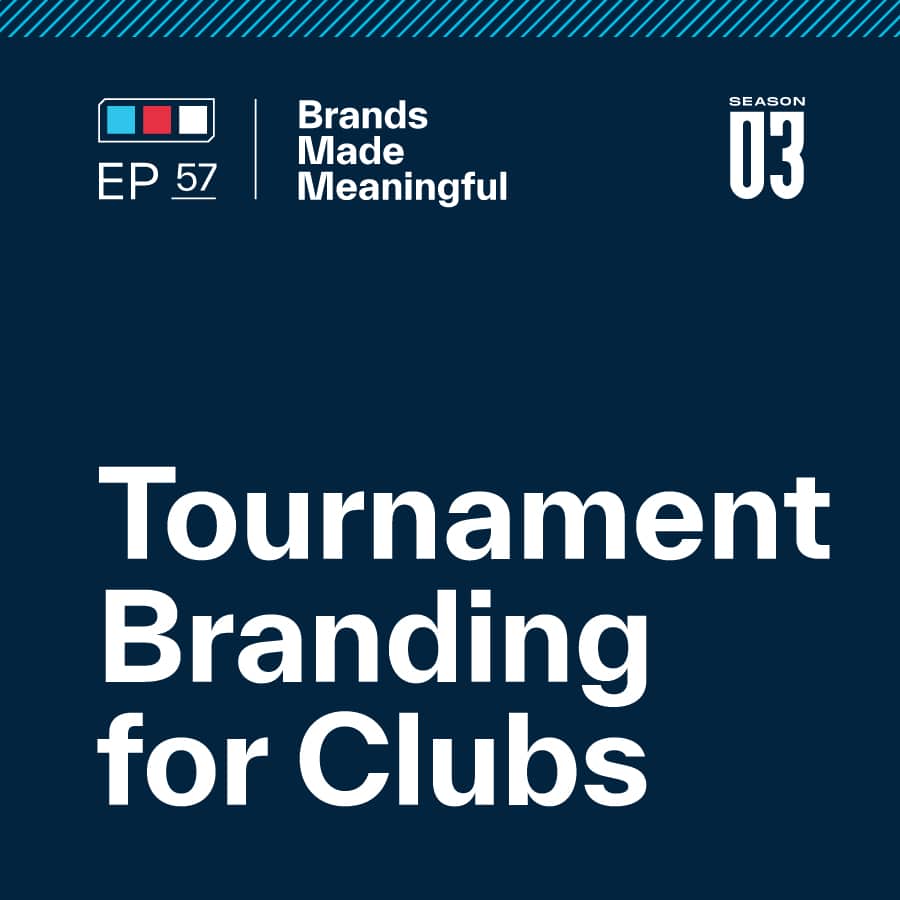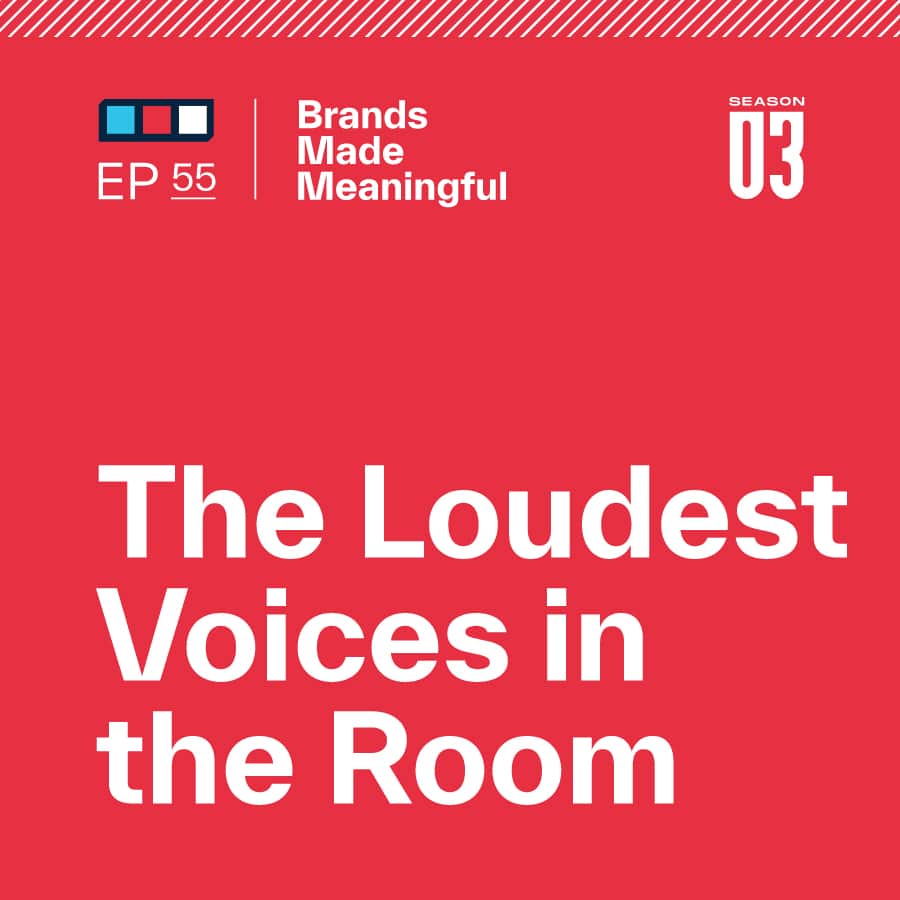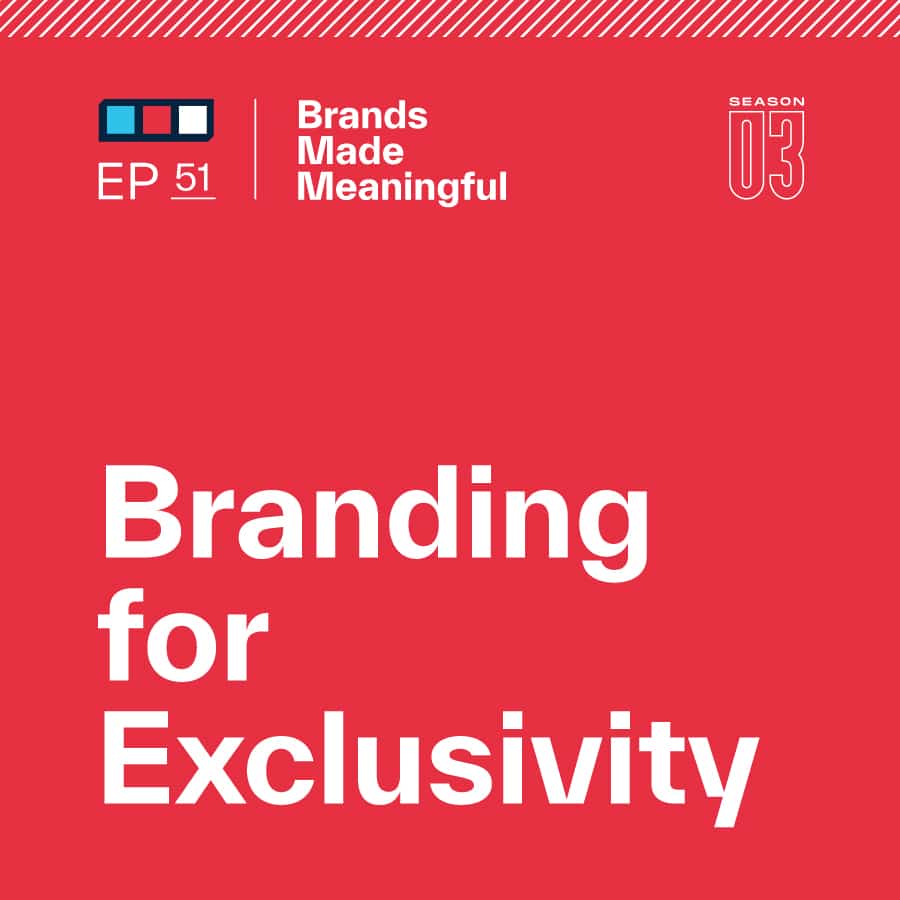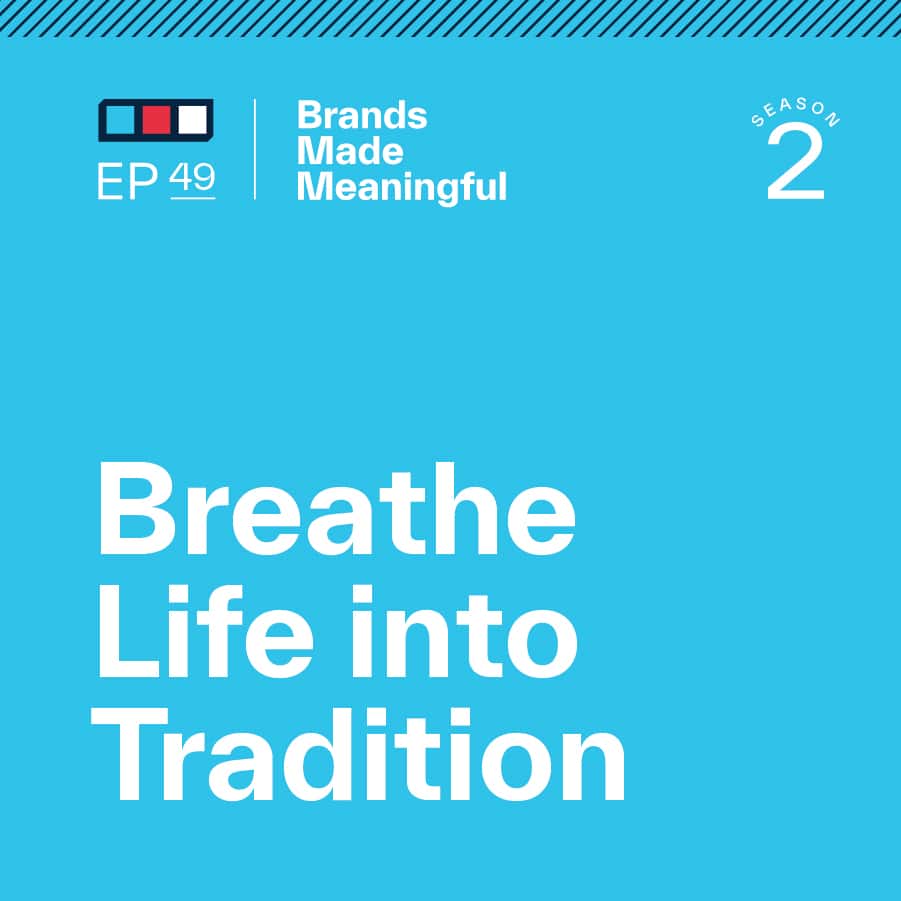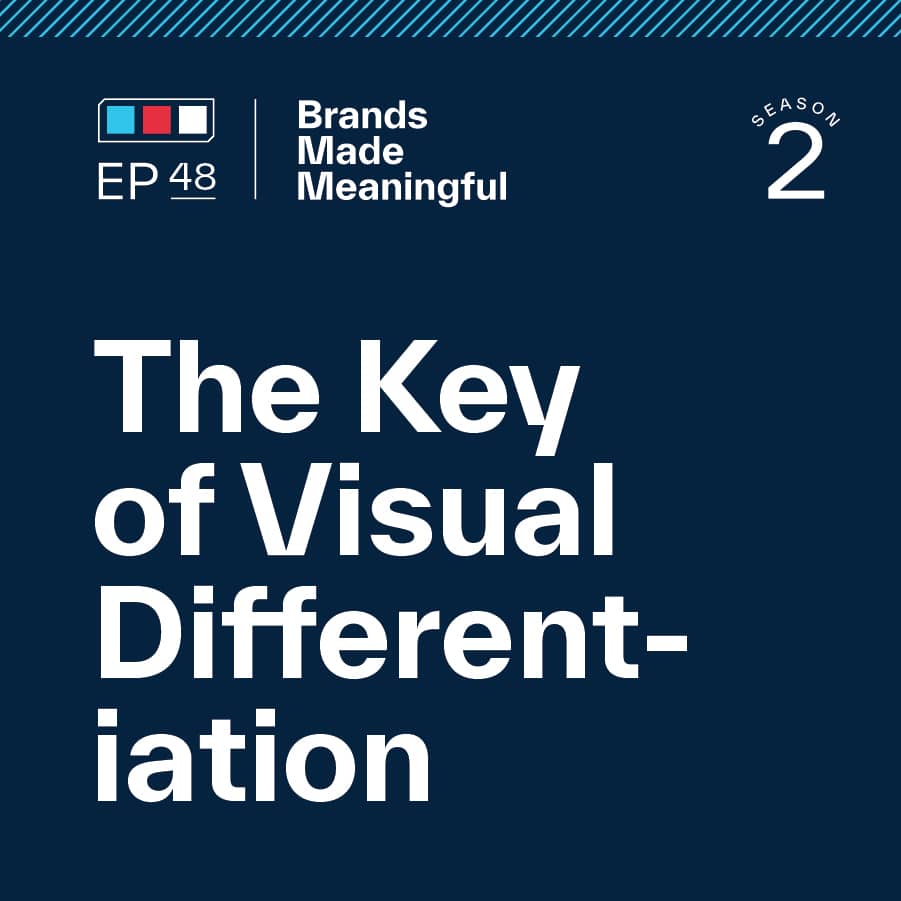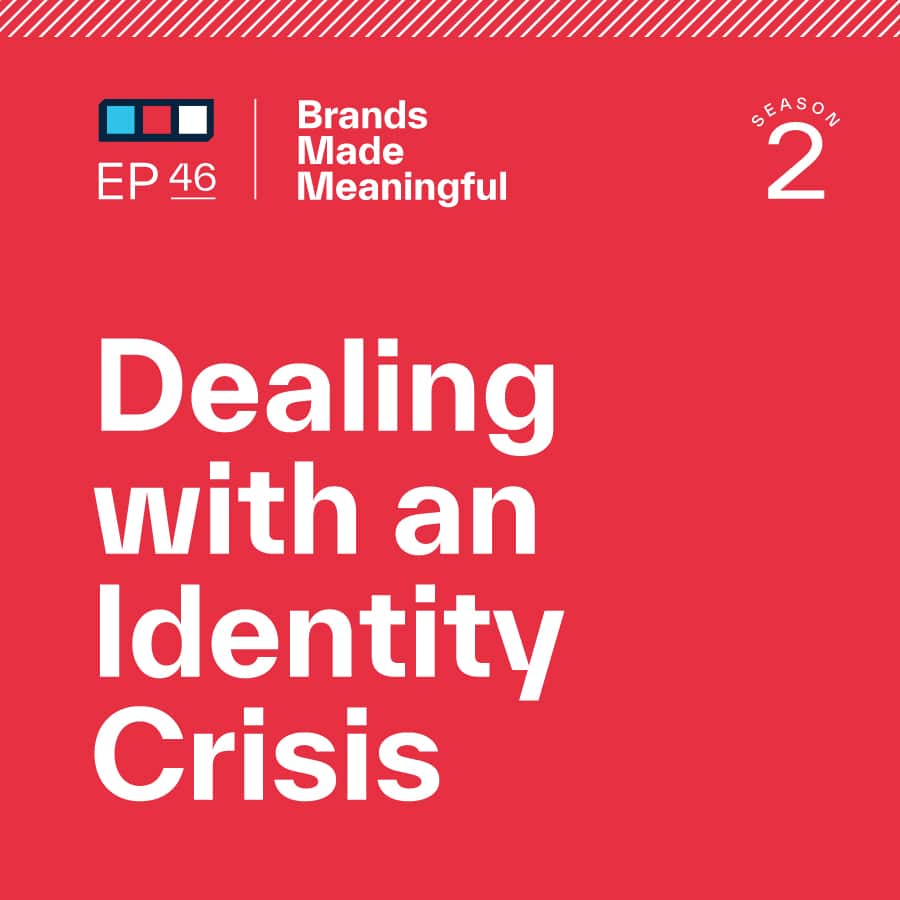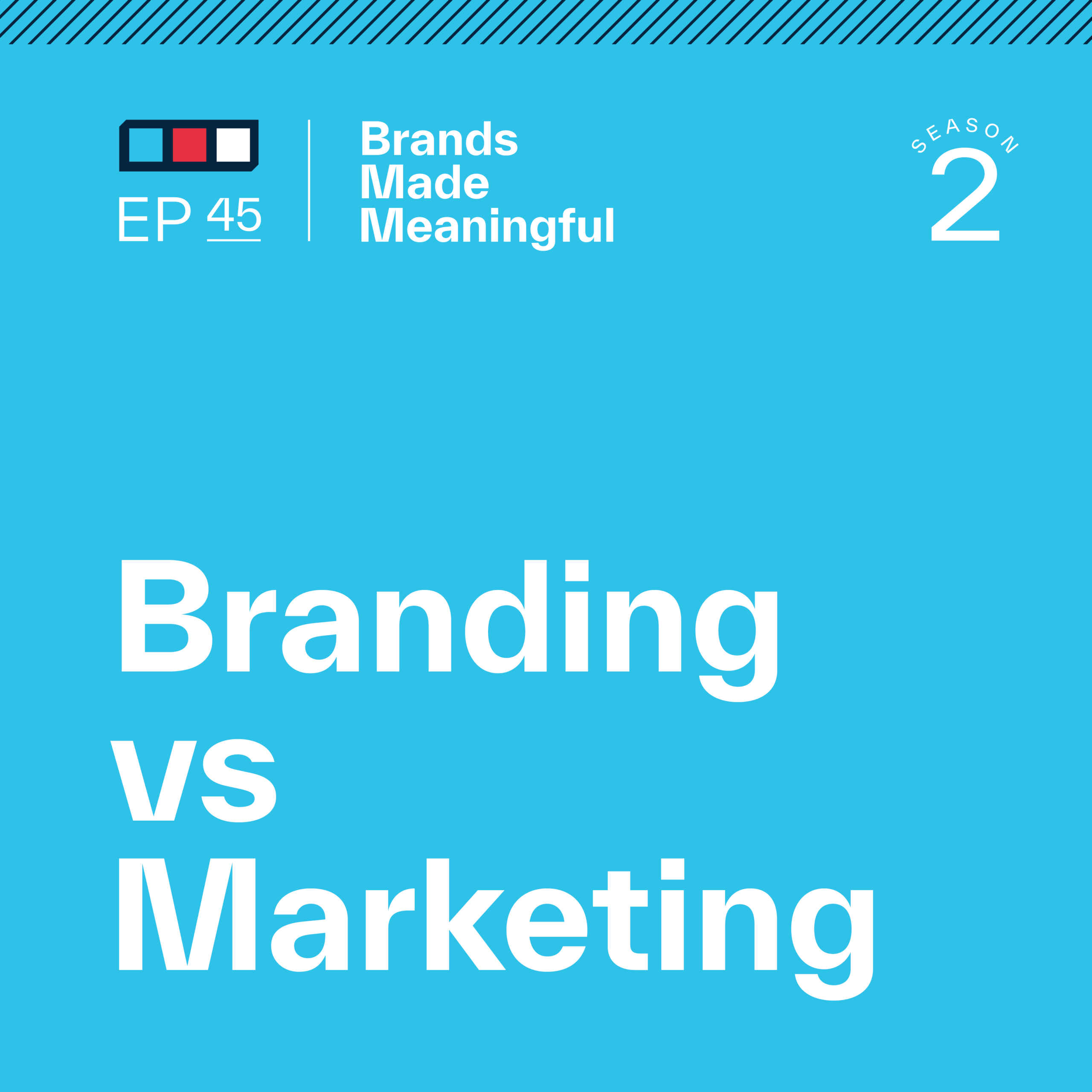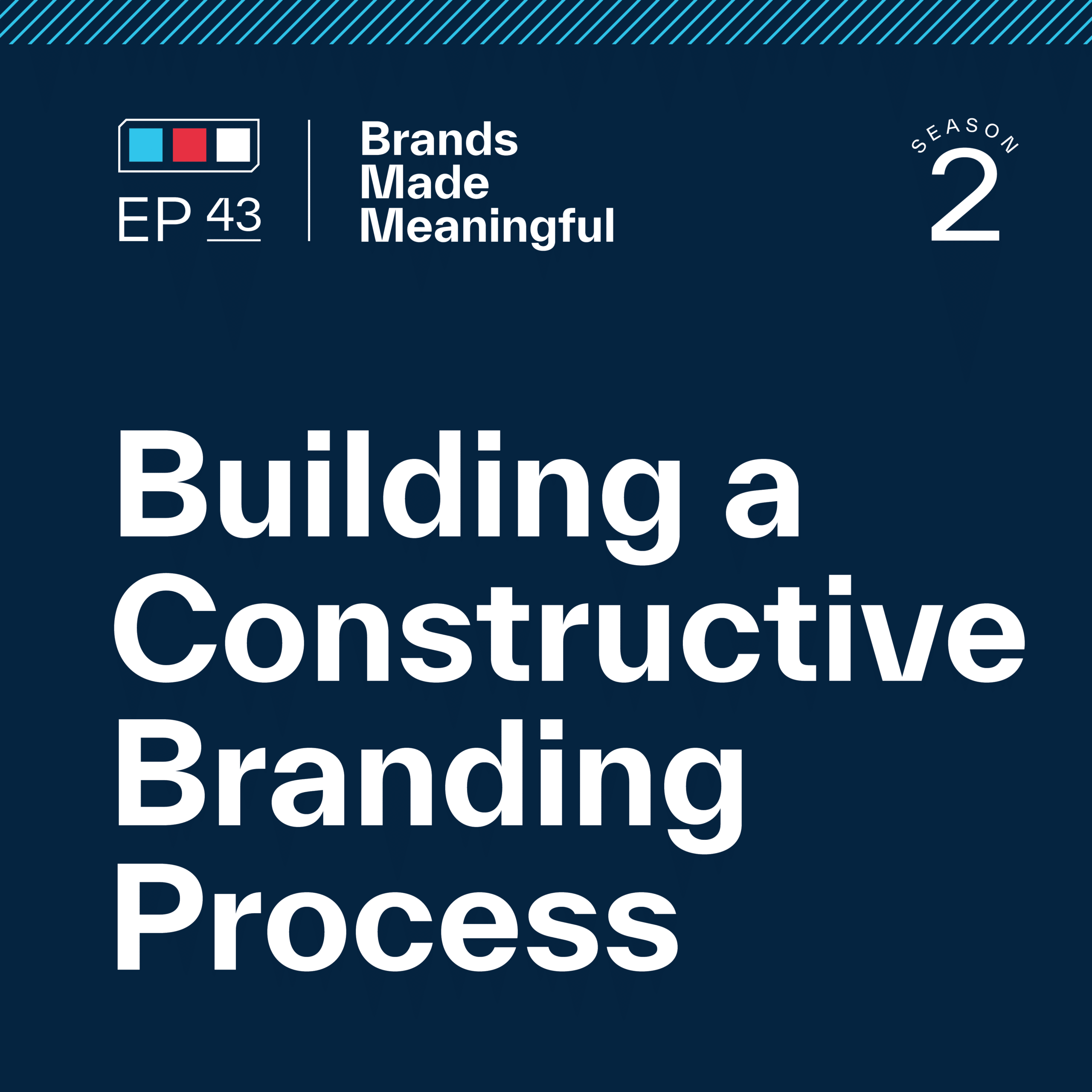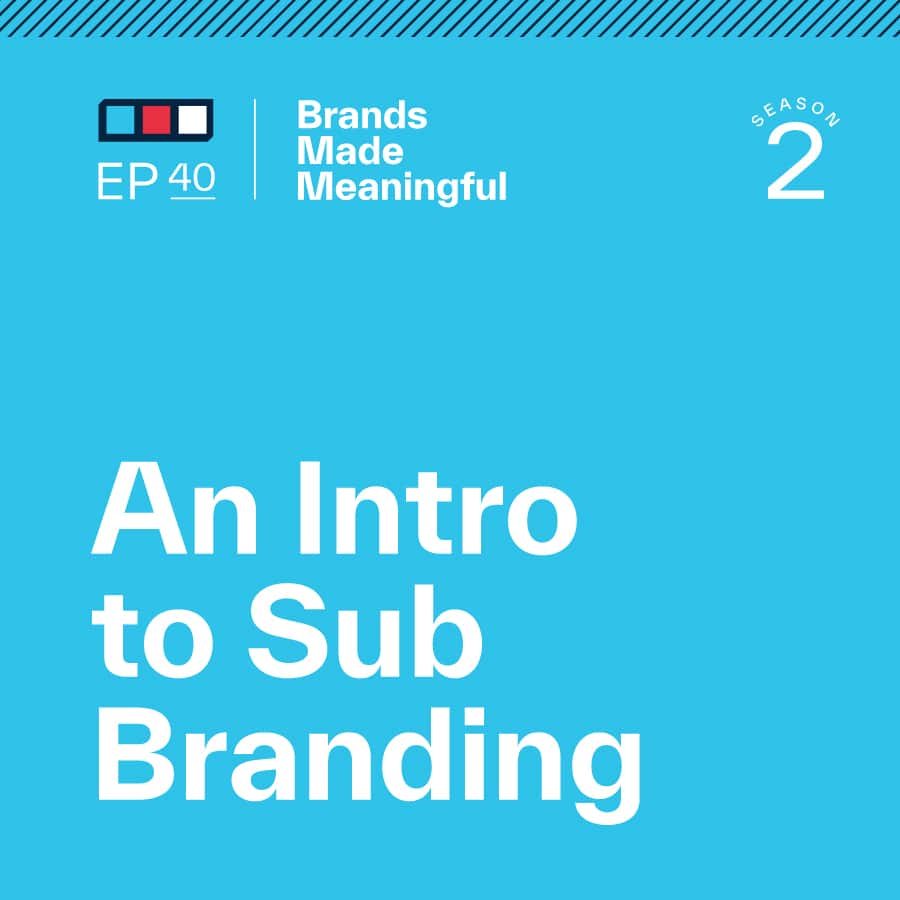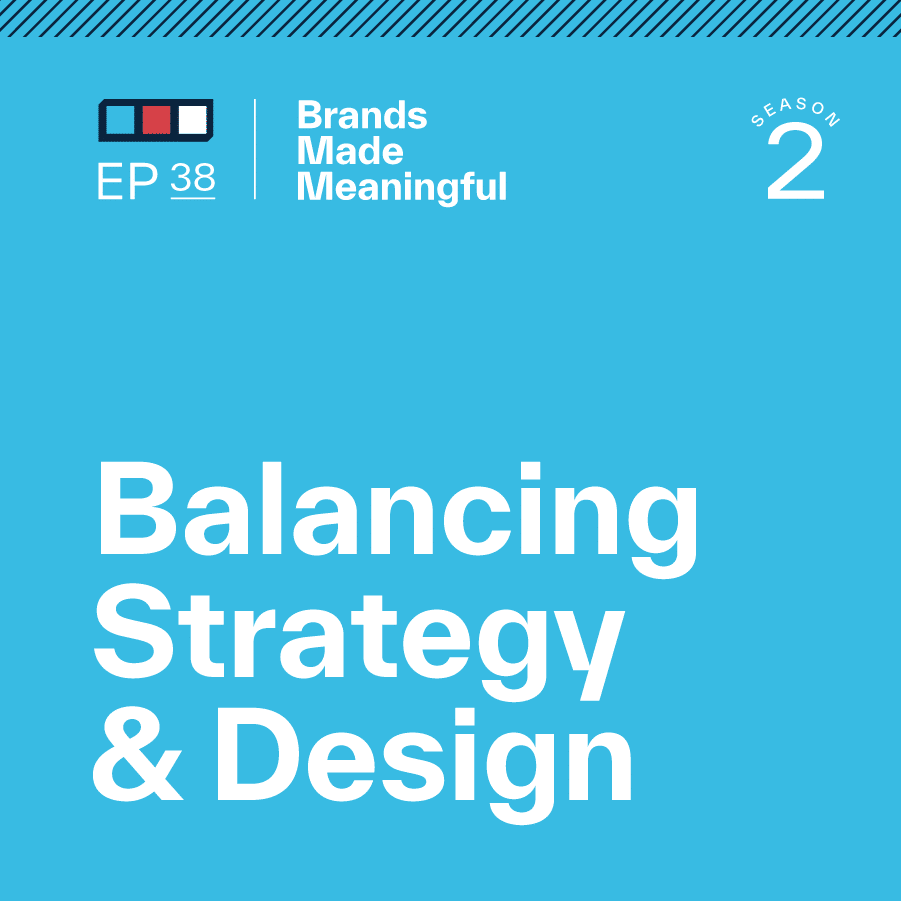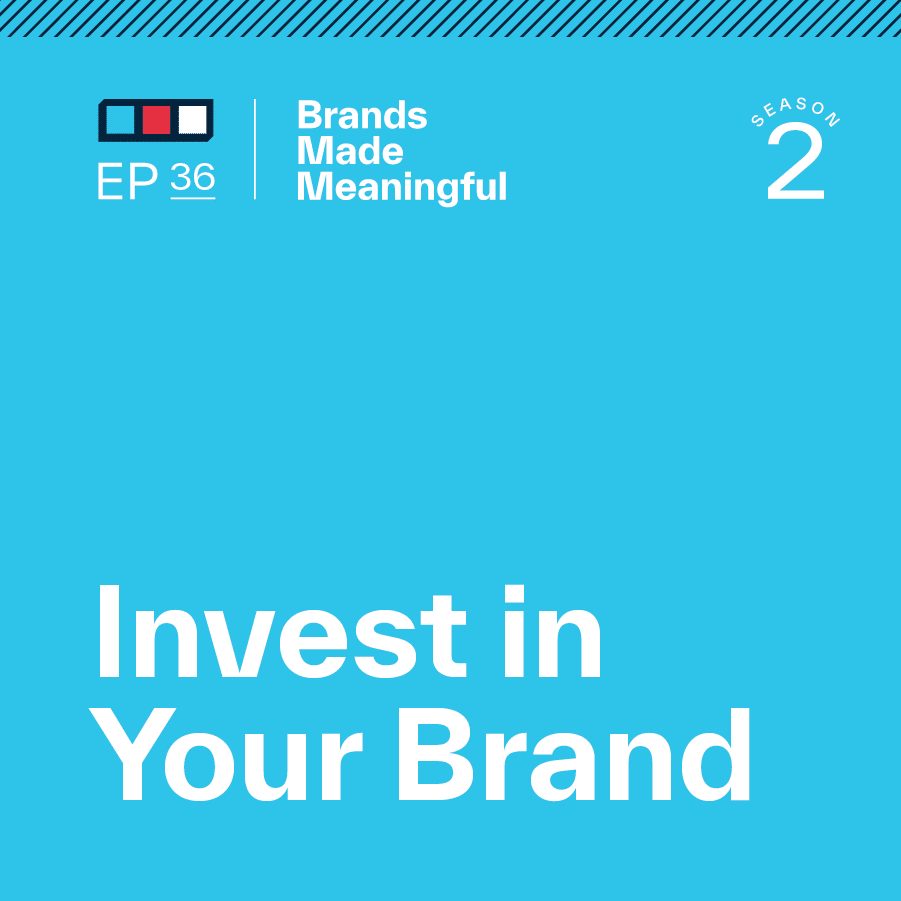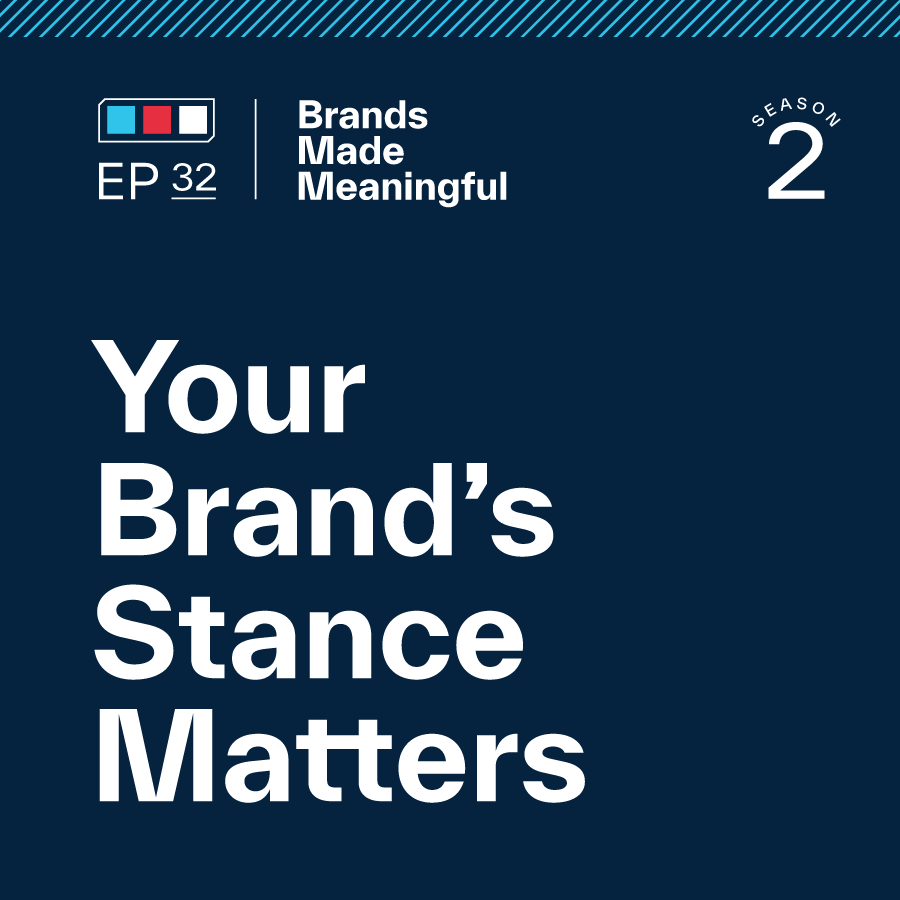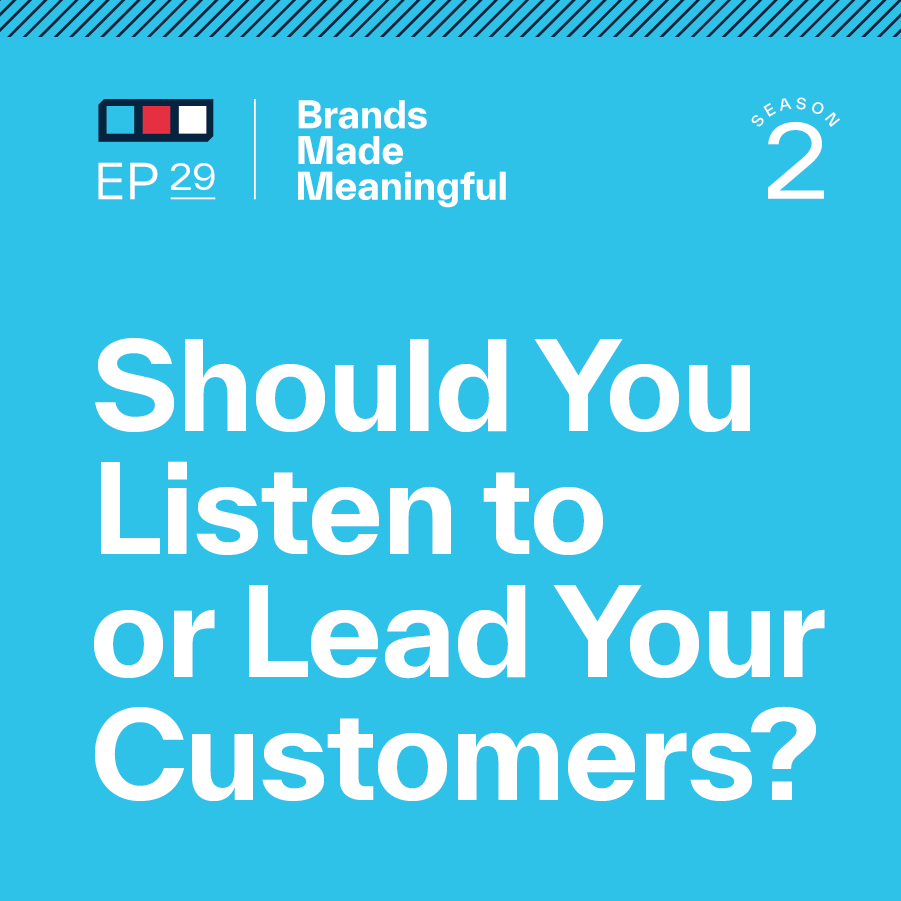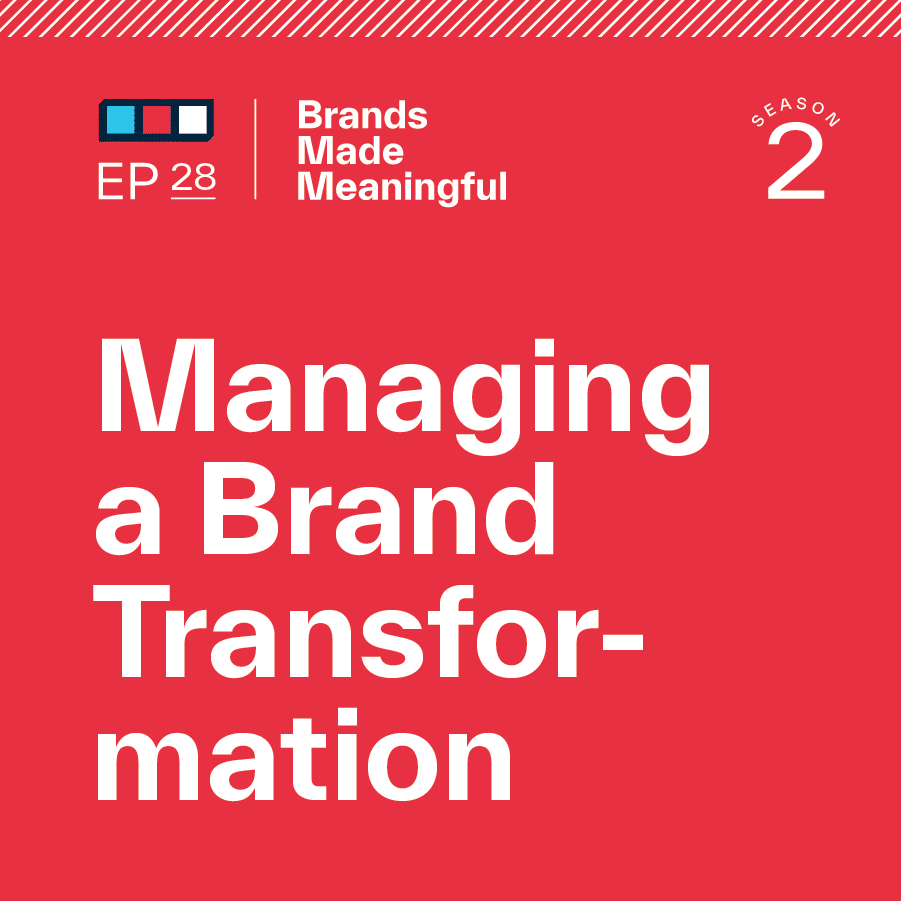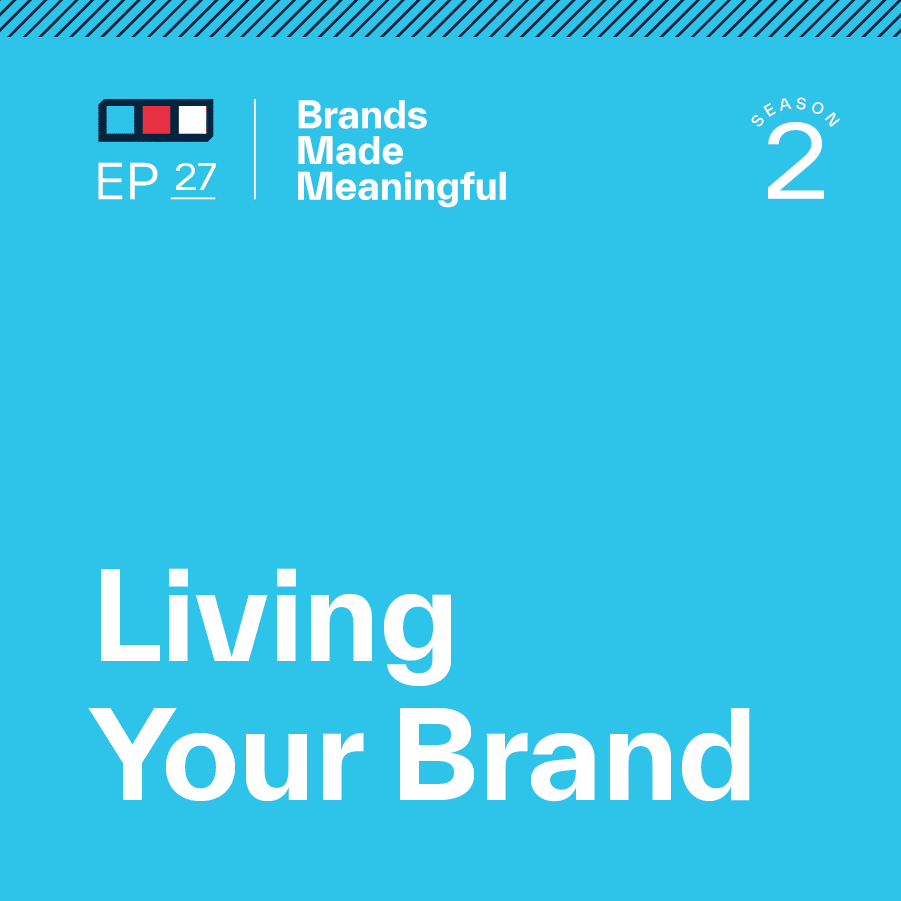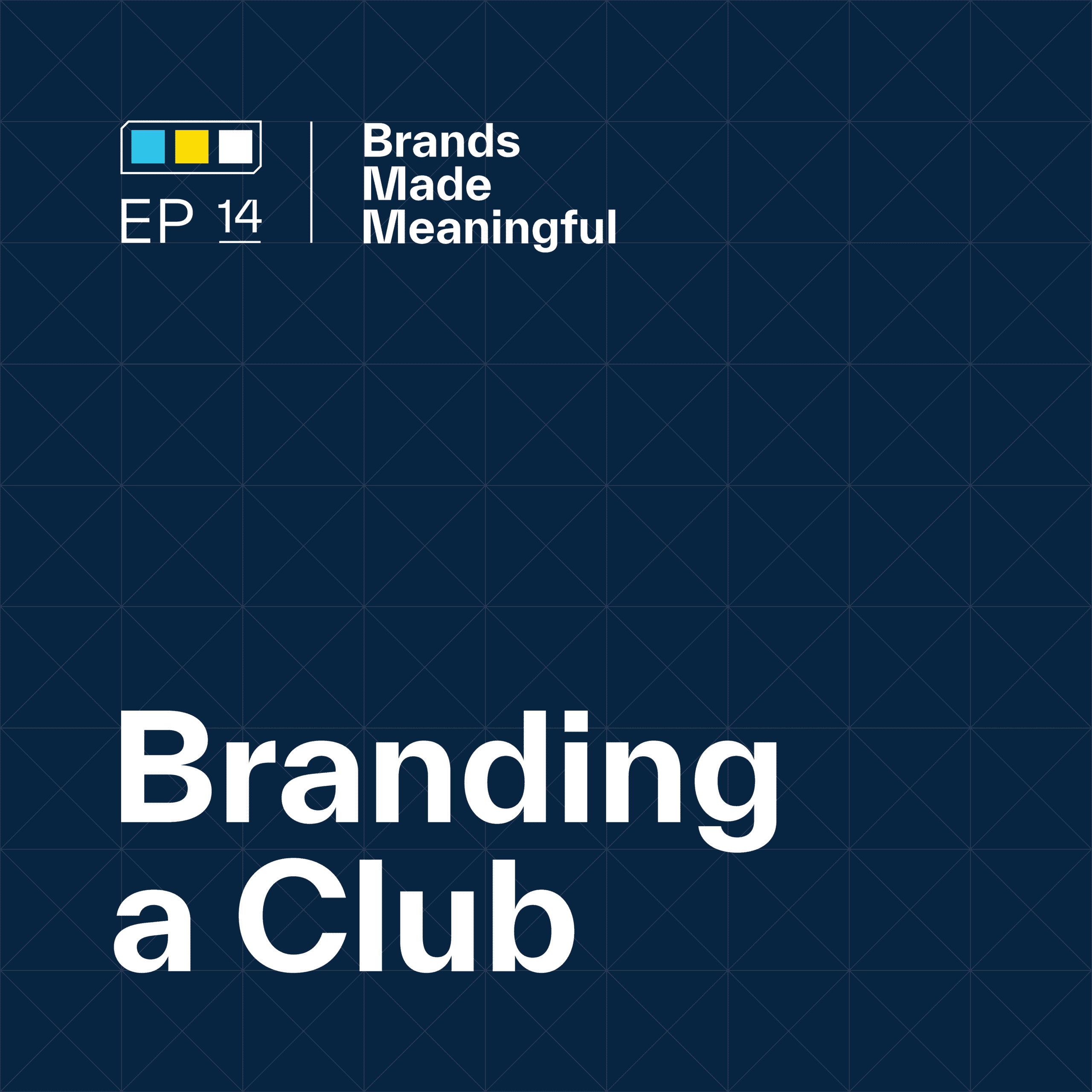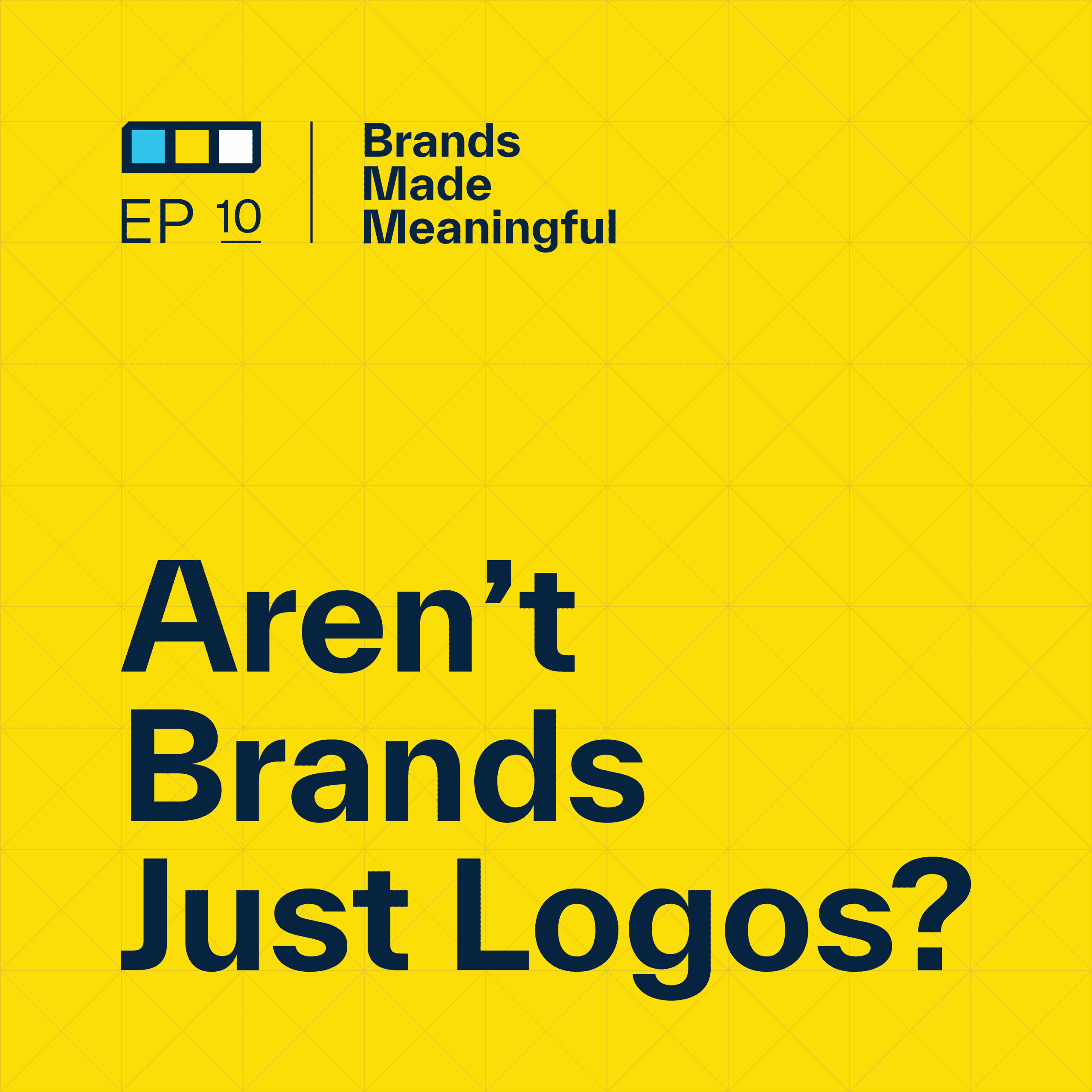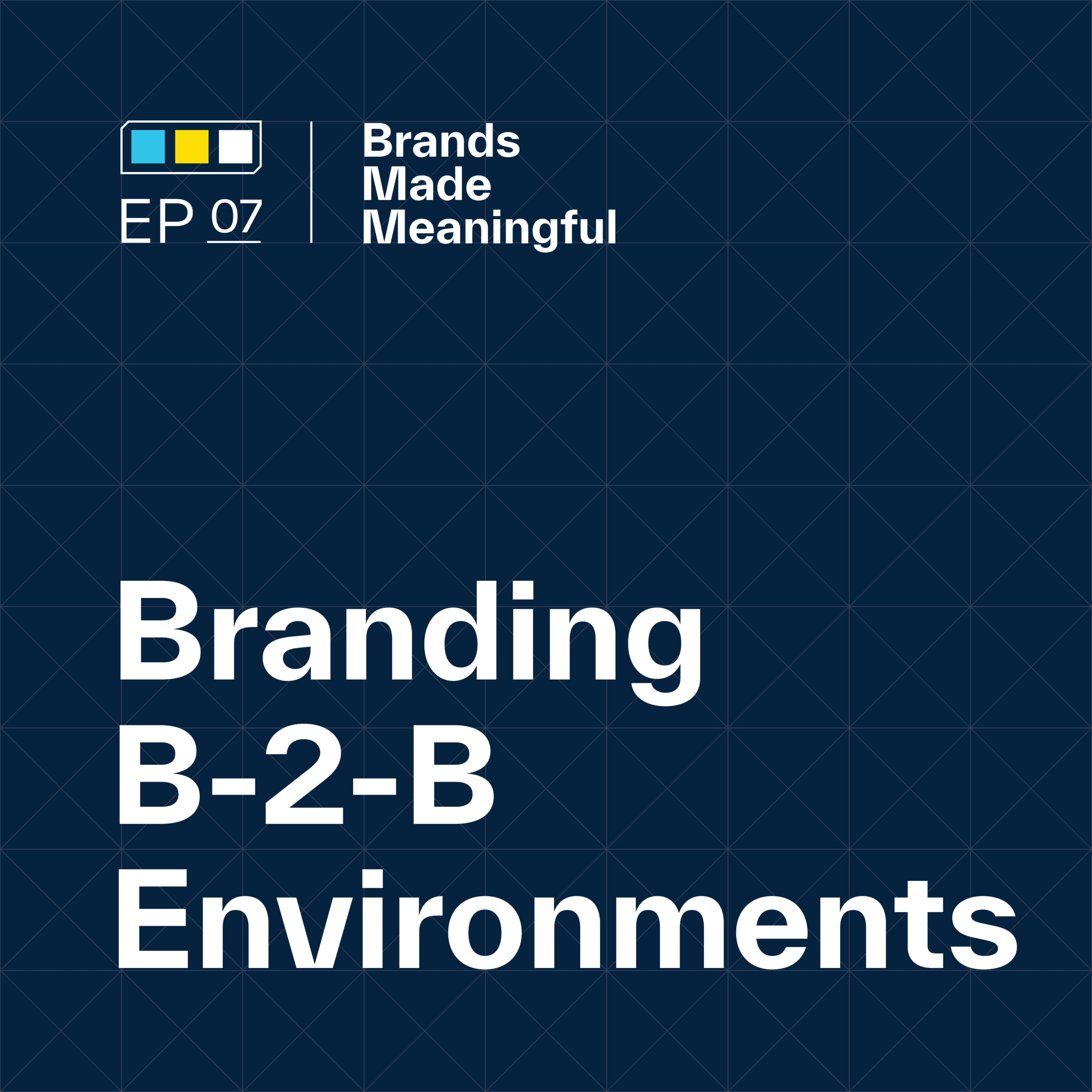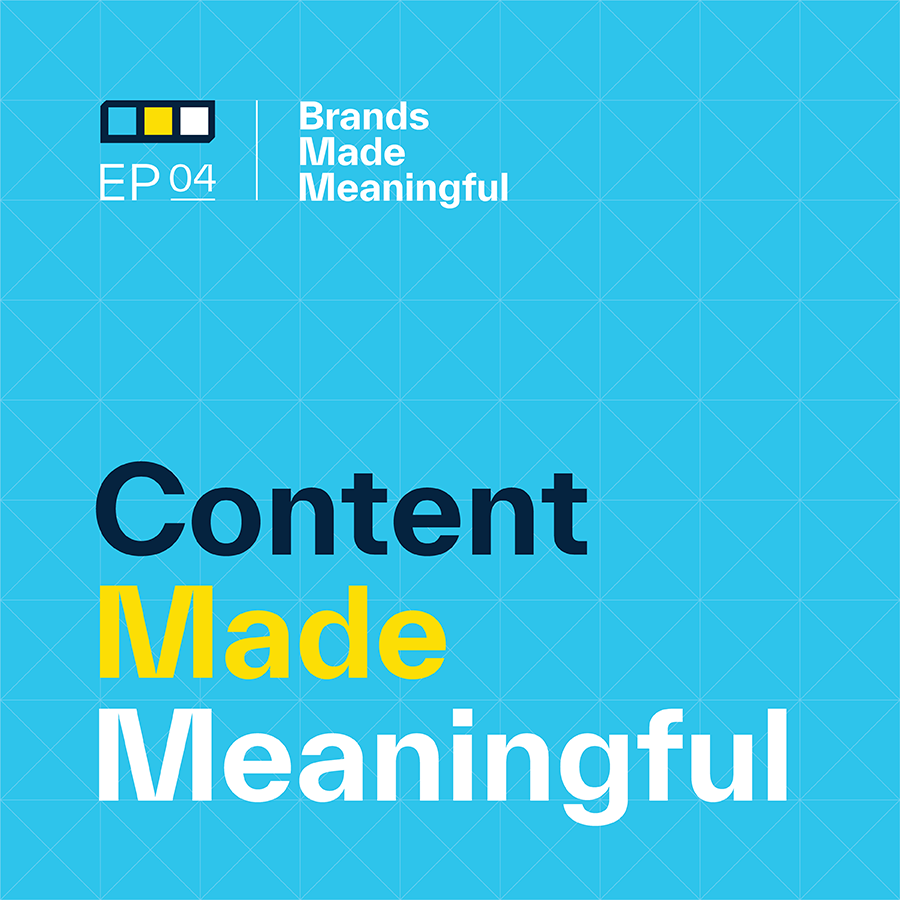EPISODE 37
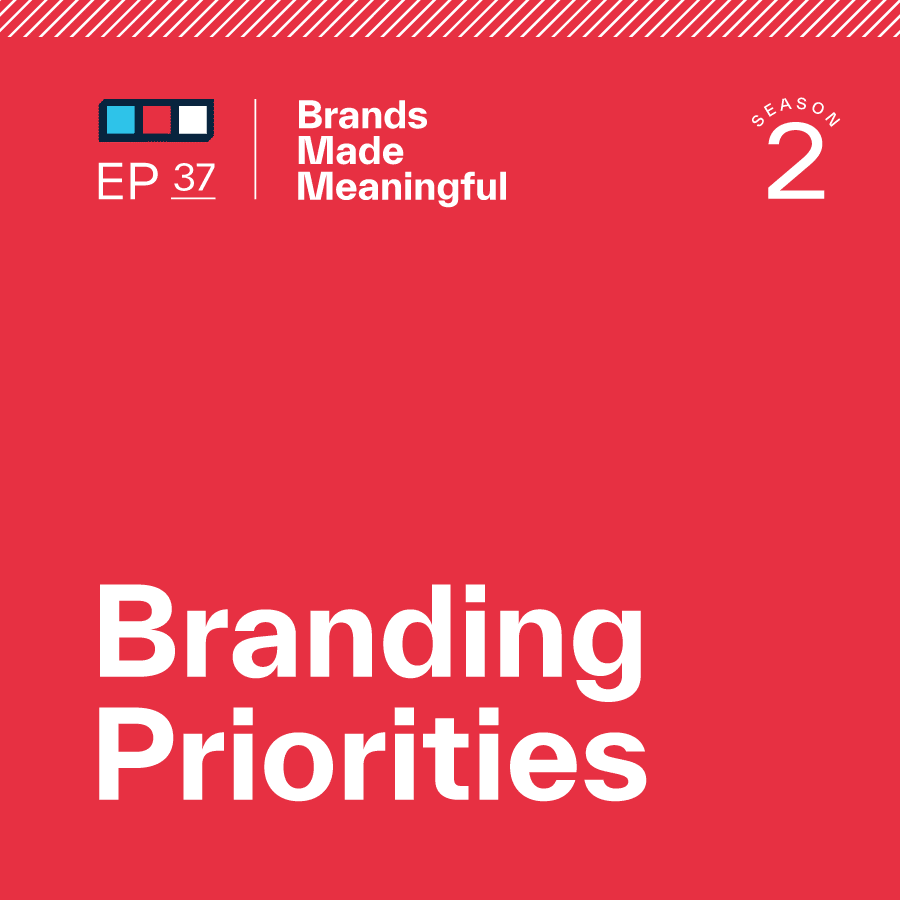
Branding Priorities
Episode 37
Branding priorities are the actions and initiatives that shape or enhance a brand’s identity, perception, and market position.
EPISODE TRANSCRIPTION
They have different challenges, they have different levels of assets, they have different access to things, and they have different budgets.
Tucker And for us, what keeps coming back within all these conversations recently is priorities. We need to set priorities for these companies and these brands and their teams to understand what is possible, what is not possible, and what’s going to build the biggest impact today and in the future.
Expand Full Transcript
Derek It comes up all the time. Where do we start? What’s the most impactful step? What should we do first? What we should do first or what we should do now requires a little bit of a conversation before I think we can answer that.
Tucker It’s understanding what our goals are, what we want to do, and what we want to get out of this. I love when clients say, Well, what should we attack first? And it’s like, Well, how much time and how much budget do we have to attack this?
Derek What are you trying to do? Is this a three-month initiative? Are you looking at your three-year picture? Are you working towards the vision of your company long term or are you looking to knock out a promotion or a quick campaign?
Tucker So a really quick definition – I would call it a Sussner definition. Branding priorities are the actions and initiatives that shape or enhance a brand’s identity, perception, and market position. That’s just the high-level definition that we use here. So when we work with clients on creating these priorities, we generally separate them into two high-level categories – short-term and long-term priorities. That’s what we’re talking about today.
Derek Let’s elaborate on these three briefly. Brand identity. What’s brand identity?
Tucker The way that you show up in the marketplace, the way that people see you, whether that be sights, smells, or sounds. Think of identity as when I’m viewing you. I can see that within color visuals, people mostly think of logos here. That would be brand identity. Look and feel.
Derek Look and feel is a thing that people tend to say. Number two is perception.
Tucker The way that people think about you.
Derek Reputation.
Tucker Reputation is a great way to think about that.
Derek And number three is market position.
Tucker We would say what you do, who you do it for, and why it matters. The position would be your differentiation in the market. How do people consider you versus other people? There’s kind of this leveling of that position.
Derek So what we’re talking about are the priorities, the actions, and the things that a brand or an organization can do or should do that shape those three things – how you look and come across, the reputation that you’re building, and basically, the stake in the ground that you’re claiming within your market.
Tucker Absolutely. In the short term and in the long term.
Derek So then, short term or long term.
Tucker So why does this matter? Why do we talk about it? Why does it matter if we’re talking about short-term, long-term priorities at all? I think it comes back to that marketing landscape, especially within the world of sports, in which we have a lot of experience. That landscape changes all the time and it changes really quickly. So if you’re not re-analyzing priorities, if you’re not re-analyzing your brand on a quarterly or even a semiannual basis, then there can be opportunities that you are missing out there.
Derek I think what used to take a decade to change or evolve within the market or let’s say your target customer, for example, that the very specific persona or profile that is your best customer, it used to take, I don’t know, maybe decades for that to evolve or change. Now I think it takes years.
Tucker It’s interesting to see. After COVID we’ve seen it fragment even more where you get customers that are really passionate about certain things. And those passions now are coming out more and more and more. For us, that means that the landscape has changed and we need to be ready for it.
Derek You need to be ready for it, planning for it, anticipating it, and working on it so that you can continue to compete, or like what we like to say, to keep crushing it if you’re already crushing it and not sit back and rest on your current success but to be thinking long term also.
Tucker So creating effective strategies to leverage branding, in general, can be super powerful for businesses, organizations, and people trying to sell products or hire really great talent or have more inspired leadership. All these effective strategies are great. But there are so many things that we could do with those strategies. There are so many ways to shape or enhance your perception. How do we pick what to do? How do we set all these things up and go, Well, we only have so much time. We only have so many resources to go after some of these. What’s the way we go about that?
Derek So one option is we go for short-term quick wins, short-term success, and immediate transactions, so to speak.
Tucker I had a conversation with someone earlier today about baseball, and I’m just in a baseball mindset right now, but it’s like singles and doubles. Like all we need to do is hit some singles and doubles. We don’t need home runs. We just need to keep it going in a certain direction. So I think of small things. Play small ball. That’s totally fine. Think of what we can do right now to increase our odds in the game in the season right now.
Derek But that’s the key. You’re talking about this game, this inning, and winning or losing in the next hour and a half. What we’re not talking about is this season or next season or the next season after that.
Tucker We’re not talking about the philosophies of your baseball team. We’re not talking about the way that you approach the game. We’re talking about just being able to get people on base and try to get them around. That’s a different way. So when we talk about reimagining the way that we build a team, that would be long-term thinking.
Derek Back to the baseball analogy, which I love, now you’re acquiring free agents that have expiring contracts. You’re only going to have them for the rest of the season because you feel like you have enough pieces in place to make a short-term run this year at the playoffs but knowing that next year all those assets are gone and you’re going to have to start over and rebuild.
Tucker So side note, we could start a baseball podcast.
Derek Let me put that on a Post-it note and set it over here.
Tucker Trying to get back on track a little bit here, when we talk about short-term brand priorities, these are things that we’re trying to make an impact on today. We’re trying to make an impact in the next quarter, in the next calendar year. But those aren’t going to be things that we look at as ways we can really advance our brand in the next five years. That’s just a different way of looking at it. So short-term is now and the next 12 months. Long-term, we would say, is the next 5 to 10 years. Where are we looking? Maybe three to 3 to 10 years. There’s a big gap.
Derek And we’ll break these down and look at both of them and the pros and cons of each. But spoiler alert, it’s going to be a balance of both.
Tucker I think that there are people that would love to say, Oh, you can get off with just doing short-term things. That’s fine. All the short-term things, going back to the baseball thing where you hit enough singles and doubles, you’re going to win a lot of games. That’s totally fair, but that only lasts for so long. And so we can do these short-term goals. We can keep squeezing the juice out of the lemons, but eventually, we need to be planting more. We need to be going and finding new sources.
Derek That’s another great analogy. We’re planting in addition to harvesting. If you just keep harvesting and you’re not planting, and I’m not a farmer, but I get that you have to be growing for and thinking about and nurturing the ground and taking care of what’s coming for the future too.
Tucker So two quick caveats. Neither of us plays baseball and neither of us is farmers.
Derek Not anymore. Not for a very long time.
Tucker So let’s break down the long-term and short-term priorities. I think that’d be helpful for most people. What does short-term mean and what’s an example of that? And then do the same thing for long term. So let’s start with the short-term. So short-term priorities are like immediate actions and initiatives that can create an impact in the present. Think of these as priorities that are focused on capturing attention, generating sales today or in the next couple of quarters, and then attracting new customers. This would be not a new category of customers but we’re just trying to expand our reach within that same category.
Derek For EOS people, this is this quarter’s rock or even this year’s one-year plan. What are we doing to create positive impressions and increase market share as fast as possible?
Tucker For example, a short-term priority could be creating a brand campaign that helps a specific audience better understand your brand and the specific offering you present to them. There is this level of how we can tell the people we already talked to a better story or the same story maybe in a different way. How do we keep them coming back and how do we just generate that new level of excitement on the same stuff?
Derek How do we get our current customers to buy from us again? In many ways, a short-term strategy, using a pizza analogy, is getting people who already buy pizza from you once a month to buy pizza from you twice a month, versus the long-term strategy of going and finding a brand new customer who has never purchased pizza from you before.
Tucker Another example would be improving your packaging design. When a brand improves its packaging design and it becomes more visually appealing, it aligns with new trends that people have expectations for, and it features new selling points that you feel are valid for the same customer. That helps you capture new attention. It helps you stand out on the shelf. There are levels where that can make an impact now versus you’re not going to reimagine what that product within that package is.
Derek Or reimagine the actual physical, tactile shape of the package or the interior of the package. We’re talking about cosmetically repainting it, basically.
Tucker The third example that I think could be helpful for some people is realigning influencer or athlete partnerships when you’re trying to better communicate your current brand and product strategy. I think a lot of people attach themselves to certain influencers or certain athletes and don’t come back to that enough. There is a really interesting value you can get by exploring new options in that space. So think about what your current strategy is and say, Well, maybe the market’s shifted a little bit and we haven’t looked at this in six or 12 months. It could be time to look at those partnerships and say, Are we getting everything we wanted to get out of those? Those types of shifts in your partnerships can make a big difference in the type of people you get in front of even with using your same brand as it is today.
Derek Short-term things also include promotions, sales, and discounts. I think of advertising in general as short-term, even though a long-term strategy might include advertising as part of your strategic plan. I think of the ads themselves as short-term because they’re only effective for as long as they’re running – incentives, dollars off, buy one, get one free. I think of just a few years ago when people were in COVID. Everybody was looking at the short term because they were in survival mode. So how do we get some quick wins right now?
Tucker So to recap, short-term priorities normally take the current brand assets that you might have and figure out new and better ways to use them.
Derek In the short term, we’re not refining or rebuilding. We’re just leveraging what you already have in place and any equity that it has and figuring out how to make it as strong as possible.
Tucker Let’s talk about the long term.
Derek If the short term is about immediate impact, long term, and again, this can be a three-year, five-year, ten-year sort of strategic plan, but it really leans into building a foundation for the entire brand to have success that it can sustain year after year after year and build on. Priorities might include revisiting your brand’s vision and your mission, the values which you use to put the team together that works for you. And specifically, we’ve come across this quite a bit very recently, which is to reanalyze and reconsider your positioning, your niche, the very specific – or not – industry offering that you do, and what that competitive landscape looks like.
Tucker For clients that have worked with us, we divide this into two sections. We think of brand development versus brand amplification. And so amplification is very short term to say we have this brand, how do we use it? Brand development is long-term. It’s how to create these assets. How do we build out something that’s fresh and new that we can then utilize across multiple touchpoints, across multiple divisions of our organization? This becomes a lot more of a long-term play because the results you get on it aren’t going to be seen right away. They need to be put into the marketplace and then they need to be utilized across multiple years.
Derek To use a word that we talked about in our last podcast conversation, it’s an investment. It’s an investment in the success of your organization. Long-term looks at crafting, nurturing, and building a really strong reputation for your brand so that people come to know who you are and what you stand for in the way that you want them to think of you. It creates loyal customers, brand advocates, and referral streams, and it also should help set you apart within that competitive landscape and give you quite a few advantages against the people that you’re going up against.
Tucker So here are a few examples. A long-term priority could be your team saying we need to expand into a new market or a new audience we’ve never talked to before. That would require long-term assets to be created. Think about things like taglines and messaging and verbal assets. Or let’s say you have a whole new product line and you’re saying this product line is for this type of customer. The names of those products need to be matched to their preferences. And that kind of changes the way you start looking at things. We would call those long-term priorities because they won’t be able to be implemented in the next couple of months.
Derek A sidebar to that is companies that are looking at acquisitions or mergers and are now having to figure out how to realign those same components, those same pieces of the story.
Tucker Another example could be developing new assets when you want to communicate a different position. So, like you were saying, we’ve had lots of clients over the last five years that said, We need to reposition ourselves. We have a new story to tell. We have the same audience, but they want something different from us. Or maybe we have a different audience and we have a completely different way of looking at it. That new position requires a lot of foundational work.
Derek Sometimes that new position means that that organization would benefit from a new name because the current name or tagline – that first flag that people see and hear about that defines who you are – doesn’t allow you to effectively tell that story. Renaming an organization, the act of doing that is a short-term act, but doing that act is an investment for a very long-term strategy.
Tucker The next example – we’re trying to keep these examples short here – could go for a long time, would be creating in-depth brand guidelines. And I think that most people who have brand guidelines love them, and most people don’t understand why they would need them. But these brand guidelines are basically a book of assets and rules and understanding how to use them that really help your team internally and then your partners externally stay on brand. And the reason why this is a long-term priority isn’t because it takes a really long time to build something like this, but because you won’t realize the impact of it for a good amount of time, because it needs to be utilized and understood and learned across all of your different internal audiences.
Derek I think we take brand guidelines and brand standards for granted because we create them for everybody who we help brand or help with their branding. But we come across, I would say more often than not, when companies build their brand, they start doing their marketing and they’re so focused on the product and the services that they do that unless they have an agency that they’re working with or a robust in-house marketing manager who’s in charge of this, they kind of grow organically and quickly. And then all of a sudden you’ve got all kinds of assets all over the place and you don’t know which ones to use or why and you end up with not only a lack of consistency, but you end up wasting a lot of time reinventing everything every time you need to create something.
Tucker You end up with a fragmented brand and that happens a lot when people come to us and they say, I have a problem with my brand and I have a challenge. Our stuff is just everywhere. There’s no consistency. It’s all fragmented. And that’s normally the case. We take a step back and walk them through how they got here. And it was because there weren’t brand standards that were created. There weren’t guidelines that help people stay on brand.
Derek A couple of other long-term plays would be investing in creating consistent thought leadership content, blogs, podcasts, things that grow your expertise, grow your authority, and then things that grow and reinforce awareness of your brand within your industry and your customers, like industry events, and trade shows. In our case, it might be sponsoring a certain sporting event or training camp that your sports organization provides.
Tucker And I would say that’s a short-term thing. Interest is where we differ.
Derek Back to the balance.
Tucker This is where we differ.
Derek And those are maybe some of the perfect ones.
Tucker I think that’s a perfect example of a short-term, actually. It depends on the trade show, but if I’m going to go after the same kind of customers and I already have that position and I’ve already done that, that’s an immediate opportunity for me to get in front of the people that my brand is built for. So there’s this balance of, How do we utilize these things? And there’s kind of a blurry line, but we need to do some short-term things in order to realize the long-term gains. We need to do long-term things to make the short-term ones even more successful. So with that being said, there are a couple of client examples – I won’t name names because we’re in the middle of these projects right now – that are really impactful and great examples of how we landed on this topic anyways. One of them is an organization that’s trying to expand their partnerships, their corporate partnerships. Think of it like a sponsorship within a professional sports organization. They have corporate partners that come in and maybe their name sponsors or maybe they’re not, but they needed a brand campaign. They needed something that helped them recruit and align these new partners with their current brand to say, Hey, we’re doing this. We’d love you to be a partner of ours. How do we build a nice brand campaign that tells our current story in a new way to potential partners and help them close those deals? That’s what I would consider a short-term brand priority.
Derek They’re not changing their vision, their mission, who they are, what they stand for, what they do. None of that is changing. This is a short-term initiative to support a long-term vision.
Tucker And then for them, they know that down the road there will be long-term brand priorities already on their list. Those things would include reimagining their position within the current primary audience, but then saying, We know that these partners we’re going to sign on this short-term deal – that’s a five-year agreement. So when we’re done with that, we need to make sure our brand and that new foundation are built out after the five years so that when we re-up them, we’re not re-upping them to the old brand, we’re re-upping them to the new brand, our new vision for who we are and who we need to be and the partners that need to be joining us.
Derek What I like about how this organization is approaching this specific project is that its short-term initiative supports its long-term vision. It’s not a one-time short-term transaction where they’re basically burning out an opportunity. This isn’t small ball. It’s a short-term campaign that will support something that should really redefine the future of this organization for the next ten years versus short-term promotions, quick wins, quick ads, raise some capital right now right away. But for what? I think they’re thinking about this in a really nice way and blending the short-term to meet their long-term strategy.
Tucker And so then you start getting into the question of how it is short term if it helps their long-term strategy. It’s short-term because it’s not redoing anything within its current brand. They’re utilizing the same visual assets, the same messaging. It’s just utilizing all those different things within a new medium saying how they use all of this great stuff and tell it to them in this different way. And that’s going to help them. As you said, it’s not only going to get them to get the wins today, but it’s going to help them understand the next time they have a brand campaign, this is how they execute it. Now, if we’re going to reimagine the assets that go into that brand campaign, we still have that campaign that we can leverage. The second one is with a manufacturing company that builds out products – sporting goods. It’s a great opportunity for people to understand that you can do brand work on your current audience without completely reimagining everything. And that kind of boils down to what we would call refining, refreshing, or redoing your brand. And that’s when we get to short-term, medium-term, and long-term.
Derek We talked about refine, refresh, and redo in a previous podcast.
Tucker So for them, this short-term is to say we don’t have the time or the budget to make all these long-term brand decisions. We know they’re on the list. We know that they’re there, but we want to be able to utilize all of our great thinking about the long term. In the short term, how do we do that? And the approach that we’re taking with them is to say, let’s refine your brand. Let’s not redo your brand, but let’s refine it using some of the thinking, but most of the same assets you already have. So we’re not changing the logo, we’re not changing the name, we’re not changing that other stuff. What we’re going to do is try to leverage those assets and build them out into a bigger story that is kind of built on the current story that they have, knowing that in the next 12 to 18 months we’ll probably end up revisiting all of their assets. But for them, it’s to say we need to have this short time when we need to utilize the thinking, but we need to do it in a short-term mindset.
Derek They have a season. The sport that they’re in has a season and they’re currently up against deadlines where next year’s product packaging has to go to press. So we don’t have time and they don’t have the budget to reimagine what their product packaging completely looks like and the story that it tells in the next 30-60 days. But we do have time to tighten it up and lean into some of the things that we believe will help them stand out against the two or three other companies that they’re competing directly against. This specific organization is also in the process of growing and acquiring and or potentially merging with other businesses. So for us to make a recommendation today to redo the brand based on some key insights we’ve uncovered and opportunities that they do have to strengthen and grow, it would be shortsighted for us to recommend they take that on now until we have a better understanding of how these other organizations they’re talking to fit within that overall brand umbrella and then what that means to customer messaging and visuals.
Tucker Let’s wrap it up here. Let’s sign off. What do people need to take away from this conversation? How are we going to help them understand what we talked about?
Derek As we said, thinking about branding, thinking about short-term initiatives and long-term goals, quick wins, and long-term sustainable success, there’s a balance. There’s clearly the need to strike a balance between establishing strong, enduring opportunities that will support your brand and your brand’s identity while capturing any opportunities that you can in the meantime.
Tucker Short-term actions drive immediate short-term results, and that’s fantastic. But that investment needs to be realized in the short term. We can’t expect short-term actions and activities like an ad to have long-term implementations for us. When we’re looking at the benefits of short-term and long-term balancing, those are absolutely critical. But when we have a strong brand, it’s almost always rooted in a long-term strategy, I would say. That’s not always possible for some of our clients, and we totally understand that.
Derek We’ll say if you don’t have a long-term strategy and we’re into the amplification or execution of visuals, graphics, and marketing materials, it tends to be a little bit more of a guessing game with what those assets need to be, and with what your messaging is.
Tucker To simplify everything, If your brand is strong, you know your story, and your audience and you understand what you do and who you do it for in a really great way, then you should lean into the short term. You should lean into those priorities that best apply and execute and amplify your brand to those people. You already get it. If you don’t know those, if you don’t know what you stand for, if you don’t know who you should be talking to or what your brand is all about, or who is the best audience for your brand, then that recommendation is going to be long term. Any of those short-term things aren’t going to provide you with wins. They’re going to provide you opportunities to waste your budget, and we would rather you utilize that on long-term initiatives that can really help you in the future.
Derek Well said. I enjoyed this topic. If there’s a topic that anybody would like us to talk about or dive into, we’d be happy to. Just shoot us a message and let us know. In the meantime, we will talk to you next time.
Tucker Yeah, send Derek an email. He doesn’t get enough of those. Just keep his inbox full.
Derek Thanks, Tucker@Sussner.com. Sussner is a branding firm specializing in helping companies make a meaningful mark, guiding marketing leaders who are working to make their brand communicate better, stand out and engage audiences to grow their business. For more on Sussner, visit Sussner.com.
More Episodes Like This
Reclaiming Reputation Through Brand RevitalizationEpisode 85
Derek and Tucker discuss the potential that a branding initiative can have to restore a club’s reputation.
Branding The Club with Don KovacovichEpisode 84
Don Kovacovich, GM of The Club at Golden Valley, joins Derek & Tucker to discuss the impact that rebranding has had on his club and the opportunity it presents for other clubs
Changing a Club’s Membership ModelEpisode 83
Derek and Tucker discuss key considerations and challenges when changing your club’s membership model.
Connecting a Club with its Story with Jackie CarpenterEpisode 82
Derek and Tucker are joined today by Jackie Carpenter, author of People First.
Branding a Club AnniversaryEpisode 81
Derek and Tucker discuss the unique opportunity presented by milestone and anniversary dates for private clubs.
Private Club Storytelling with Ricky L. Potts, Jr., CCMEpisode 80
Derek and Tucker have the pleasure to speak with Ricky L. Potts Jr. about how powerful storytelling can be for your club members.
Opportunity in Club Facility RenovationEpisode 79
Derek and Tucker discuss pivotal key moments in your legacy and how to transform your story through renovation.
The Evolution of Club Members with Jon LastEpisode 78
Derek and Tucker are joined by Jon Last from Sports & Leisure Research Group to discuss the evolution of club members.
Member Branding vs. Product BrandingEpisode 77
Derek and Tucker discuss the challenges their client's have moved through when approaching differing styles of branding.
The Role of a Private Club's LogoEpisode 76
Derek and Tucker take a look back on private club logos they've designed over the years and explain the strategic reasons behind their choices.
Club Brand GovernanceEpisode 75
Derek and Tucker divulge the steps to evolving your brand while retaining your core values.
Seasonal Member MerchandiseEpisode 74
Derek and Tucker take a look at crafting specific merch to celebrate landmarks and special times of the year.
Who is Sussner?Episode 73
Derek and Tucker take a break from talking shop to talk about who they are and what they stand for.
Club Identities Beyond AmenitiesEpisode 72
Derek and Tucker discuss what it takes to stand out in unique ways for your club.
Little Things Mean EverythingEpisode 71
Derek and Tucker take a look at the often missed and easy to overlook.
Build Flexible Brand SystemsEpisode 70
Derek and Tucker break down the building blocks for long lasting branding.
The Club at Golden ValleyEpisode 69
Derek and Tucker take a close look at one of their recent rebrands.
When to Launch a Club RebrandEpisode 68
Derek and Tucker break down how to find the perfect timing when launching a club rebrand.
Steps to Launching a Club RebrandEpisode 67
Derek and Tucker break down the steps to take and the reasons why you should consider a club rebranding.
Brand Marketing vs. Brand DesignEpisode 66
Derek and Tucker define the line between marketing and design and how they intersect to inform one another.
Building Brand GuidelinesEpisode 65
Derek and Tucker show us how to build infrastructure guidelines to unify your brand experience across the board.
Club Identity SystemsEpisode 64
Derek and Tucker cover what Identity Systems entail and how to discern between internal and external methodologies.
Navigating Branding With a BoardEpisode 63
Derek and Tucker bring clarity to uniting your company under one cohesive vision.
Putting a Committee TogetherEpisode 62
Derek and Tucker assemble your need-to-know facts when putting together your committee.
The Guiding Principles of Private ClubsEpisode 61
Derek and Tucker go over the top ways private clubs can find the balance between pleasing old members while attracting new ones, all while making moves towards the future.
How Color Affects PerceptionEpisode 60
Derek and Tucker cover how to best convey your business with color.
Brand EcosystemsEpisode 59
Derek and Tucker break down how to craft effortless experiences when considering your brand as a whole.
6 Types of Brand TransformationEpisode 58
Derek and Tucker dive into 6 distinct types of transformations for a wide range of brands.
Tournament Branding For ClubsEpisode 57
Derek and Tucker discuss designing and delighting your club members with tailored events.
Brand Promoters & DetractorsEpisode 56
Derek and Tucker discuss how high level promoters increase your NPS and how to turn the tides on your detractors.
The Loudest Voices in the RoomEpisode 55
Derek and Tucker talk about gathering feedback while prioritizing every voice.
Determining A Primary AudienceEpisode 54
Derek and Tucker discuss if and when you should be honing in on your audience vs. casting as wide a net as possible.
Branding For ExclusivityEpisode 53
Derek and Tucker discuss the intricate process of naming your brand.
Measuring Brand SuccessEpisode 52
Derek and Tucker discuss how we measure our success in branding and a few key KPIs that help us understand our impact.
Branding For ExclusivityEpisode 51
Derek and Tucker breakdown how brands can create the perception that they are exclusive and only for a certain type of consumer.
What Makes A Brand SurprisingEpisode 50
Derek and Tucker break down the Sussner formula that we believe leads to a surprising brand.
Breathe Life Into Brand TraditionEpisode 49
Derek and Tucker discuss the intricacies and common pitfalls of branding for Private Golf Clubs.
They Key of Visual DifferentiationEpisode 48
Derek and Tucker break down the importance of differentiating your brand on a visual level.
Branding For Private GolfEpisode 47
Derek and Tucker discuss the intricacies and common pitfalls of branding for Private Golf Clubs.
Dealing With An Identity CrisisEpisode 46
Derek and Tucker breakdown how to identify and remedy a brand's identity crisis throughout thoughtful and intentional brand management.
Branding vs MarketingEpisode 45
Derek and Tucker discuss the differences between Branding and Marketing and how to make the two compliment each other.
Build Your Brand's FoundationEpisode 44
A brand's foundation is a critical element in being successful in the long-term.
Building a Constructive Branding ProcessEpisode 43
Derek and Tucker break down the steps required to build the most constructive and meaningful branding process.
What Makes a Brand Relevant?Episode 42
Relevance is a key piece of a brand's identity for creating clarity and connection.
Your Right to WinEpisode 41
Derek and Tucker discuss the “Right to Win” and the odds of your brand's success within your target market.
An Intro to Sub BrandingEpisode 40
Derek and Tucker discuss the nuances of developing sub-branding and strategies.
Conquer Branding FearsEpisode 39
Derek and Tucker dive into how to overcome the fear of change and the nature of constant refinement of your brand.
Balancing Strategy & DesignEpisode 38
Great strategy is a necessary foundation for great design—and great design brings great strategy to life.
Branding PrioritiesEpisode 37
Branding priorities are the actions and initiatives that shape or enhance a brand's identity, perception, and market position.
Invest in Your BrandEpisode 36
Investing in your brand benefits your company as a competitor in the marketplace, builds trust with customers, increases perception of quality, and drives employee engagement.
Why is Positioning Scary?Episode 35
Narrowing the brand's position is really a strategic decision to focus the brand's offerings, messaging and target audience on a specific niche or segment within the market.
What Are Brand Consultants?Episode 34
Derek and Tucker discuss the importance of hiring expertise with a wider breadth of knowledge than just visuals.
Hire for Brand FitEpisode 33
Hiring people that fit your brand is key in order to maintain brand authenticity, positive culture, and consistent messaging.
Your Brand’s Stance MattersEpisode 32
Your stance can help define your brand from a core level and make branding, hiring, and marketing not only easier, but more meaningful.
Levels of Executing a Brand RefreshEpisode 31
If you have a brand strategy in place, how do you execute it?
The Role of Features & BenefitsEpisode 30
Derek and Tucker discuss the importance of features and benefits within the context of branding, selling, and marketing your products and services.
Should You Listen To or Lead Your Customers?Episode 29
Within the challenge of any rebrand is the challenge of managing customers' perception of change.
Managing a Brand TransformationEpisode 28
Episode 28 discusses the highlights and challenges of rolling out a new brand, both internally and externally.
Living Your BrandEpisode 27
Your brand is not this shiny trophy on the shelf. It is something that you are molding every single day.
What Makes a Brand Authentic?Episode 26
Season 2 starts off with a discussion about building authentic brand experiences, both internally and externally.
Reviewing your Competition's CreativeEpisode 25
Derek and Tucker discuss the process of reviewing your competitors' creative strategy to better position your brand within the market.
Interviewing your Audience for InsightsEpisode 24
This episode details the process and benefits of interviewing your audience as part of the branding process.
Assumption ReversalEpisode 23
Derek and Tucker discuss how we change our thoughts and get into a different mindset to refine and revise our branding.
Developing vs. Amplifying a BrandEpisode 22
Another way to say it is, development is building and crafting your brand story, and amplification is then telling it.
Refreshing a Sporting Goods BrandEpisode 21
This episode shares the steps behind Sussner’s work in refining the Shock Doctor brand.
Defining PerceptionEpisode 20
Derek and Tucker discuss the positive and negative impacts of brand perception.
What is a Brand?Episode 19
Derek and Tucker discuss what defines a brand and what makes them successful.
Branding Golf Courses vs Golf ClubsEpisode 18
Derek and Tucker further hone in on golf course design.
Refreshing a Golf CourseEpisode 17
Derek and Tucker discuss the bar for golf course design – and how to push past it.
Let’s Talk Taglines Episode 16
Derek and Tucker talk taglines in today's episode.
Refreshing an Athletic DepartmentEpisode 15
Derek and Tucker sit down today to discuss what logos mean within branding.
Branding a Club Episode 14
Derek and Tucker discuss how to brainstorm branding a club.
An Intro to Internal Branding Episode 13
Derek and Tucker discuss the power behind internal branding.
The Value of Stereotyping Episode 12
Derek and Tucker sit down today to discuss the meaning of stereotyping within the branding world.
We’re on a Mission Episode 11
This episode digs into the rallying cry for the greatness your team is going to accomplish.
Aren’t Brands Just Logos? Episode 10
Derek and Tucker sit down today to discuss what logos mean within branding.
The Business You Are Really In Episode 09
Derek and Tucker sit down today to discuss how to discover what business you are really in to better understand your mission statement.
Clarity of Vision Episode 08
Derek and Tucker discuss the importance of looking ahead towards the big picture to better hone the purpose behind what we do in the now.
Branding B-2-B Environments Episode 07
Derek and Tucker discuss the Branding of Spaces.
It’s All in the Name Episode 06
Derek and Tucker discuss what a name can say - and not - about your company.
Delving Into Branding Data Episode 05
Derek and Tucker jump into the discovery phase of branding before it hits the drawing board.
Content Made Meaningful Episode 04
Today Derek and Tucker discuss the concepts within content and its common misconceptions such as the phrase "Content is King."
Brand Story vs. Brand Messaging Episode 03
Your story matters.
Visuals That Take The Cake Episode 02
Derek and Tucker sit down to discuss visual impact and what that could mean for your brand.
Are You Different or Distinct? Episode 01
It's not about being the only option, it's about being the right option. Join Derek and Tucker as they discuss Differentiation & Distinction.



